51+ Graphic Design Project Ideas [Revised]
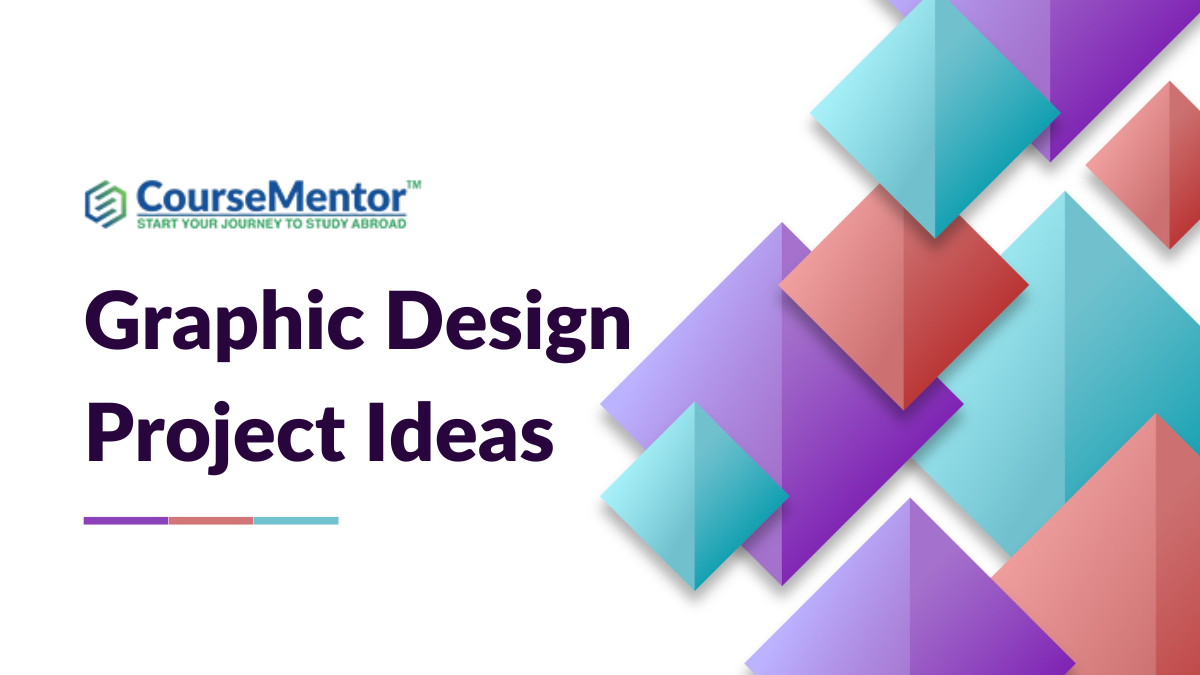
- Post author By admin
- March 31, 2024
In the dynamic world of graphic design, creativity knows no bounds. Every project is an opportunity to experiment, innovate, and leave a lasting impression. Whether you’re a seasoned designer seeking fresh inspiration or a budding creative looking to embark on your design journey, the realm of graphic design projects offers endless possibilities. This blog will cover a wide range of graphic design project ideas, including project kinds, factors to take into account for a successful completion, current concepts, difficulties faced by designers, and advice for a successful design expedition.
Table of Contents

Importance of Graphic Design Projects
Graphic design projects serve as the cornerstone of effective communication in a visually-driven world. Their importance transcends mere aesthetics, playing a pivotal role in conveying messages, shaping perceptions, and building memorable brand identities. Here are some key points highlighting the significance of graphic design projects:
- Visual Communication : Graphic design projects act as powerful mediums for conveying complex ideas and messages in a concise and visually appealing manner. Through the strategic use of typography, imagery, colour, and layout, designers can captivate audiences and evoke desired emotions.
- Brand Identity: Consistent and well-executed graphic design projects are instrumental in establishing and reinforcing brand identities. Logos, colour schemes, and brand collateral communicate a brand’s values, personality, and positioning, fostering recognition and loyalty among consumers.
- Engagement and Impact: Creatively crafted graphic design projects have the ability to capture attention, engage audiences, and leave a lasting impression. Whether through eye-catching posters, compelling advertisements, or interactive digital experiences, design projects have the power to spark curiosity and drive action.
- User Experience (UX): In the digital realm, graphic design projects play a crucial role in shaping user experiences. Intuitive interfaces, clear navigation, and visually appealing layouts enhance usability and ensure a seamless interaction between users and digital platforms, fostering positive user experiences.
- Information Visualisation: Graphic design projects, such as infographics and data visualisations, transform complex data and information into visually digestible formats. By presenting information in a visually engaging and accessible manner, designers facilitate understanding, decision-making, and knowledge dissemination.
- Innovation and Creativity: Graphic design projects provide fertile ground for experimentation, innovation, and creative expression. Designers constantly push boundaries, exploring new techniques, technologies, and trends to deliver fresh and impactful design solutions.
- Cultural and Social Influence: Graphic design projects reflect and shape cultural trends, societal norms, and collective values. From political posters to social media campaigns, design projects have the power to spark conversations, challenge perspectives, and drive social change.
In essence, graphic design projects serve as catalysts for effective communication, brand differentiation, user engagement, and cultural influence. Their importance lies not only in their visual appeal but also in their ability to inform, inspire, and connect with audiences on a profound level.
51+ Graphic Design Project Ideas
- Logo design for a new startup.
- Poster design for an upcoming event or concert.
- Business card design for a freelancer or small business owner.
- Flyer design for a local business promotion.
- Brochure design for a tourism company or travel destination.
- Social media graphics for a marketing campaign.
- Website design for a portfolio or personal blog.
- Email newsletter design for a company’s monthly updates.
- App interface design for a mobile application.
- Digital advertisements for an online marketing campaign.
- Magazine layout design for a niche publication.
- Book cover design for a new novel or non-fiction book.
- Packaging design for a new product launch.
- Invitation design for a wedding or special event.
- T-shirt design for a clothing brand or event merchandise.
- Branding guidelines development for a new company or rebranding initiative.
- Brand collateral design (letterheads, envelopes, etc.) for a corporate identity.
- Brand refresh design to modernize an existing brand identity.
- Brand style guide design to ensure consistency across all brand materials.
- Branding campaign design for a product or service launch.
- Digital illustrations for an editorial publication or marketing campaign.
- Hand-drawn illustrations for a children’s book or greeting cards.
- Infographic design to visualize complex data or information.
- Typography art for a motivational poster or inspirational quote.
- Artistic collage design for a mixed media project or social media post.
- Intro/outro animation for YouTube videos or online content.
- Explainer video animation for a product demonstration or tutorial.
- Animated GIFs for social media engagement or marketing.
- Motion graphics for presentations or video content.
- Character animation for cartoons, advertisements, or branding.
- Signage design for a retail store or event venue.
- Exhibition booth design for a trade show or industry event.
- Environmental graphics for interior design or corporate spaces.
- Wayfinding design for a campus or large facility.
- Retail store design elements for a store layout or display.
- Interactive infographics for online articles or reports.
- Interactive website features for user engagement and interactivity.
- Augmented reality (AR) filters for social media platforms.
- Interactive product demos for e-commerce websites.
- Gamification elements for educational or marketing purposes.
- Virtual reality (VR) interfaces for immersive experiences.
- Voice user interface (VUI) design for smart devices or applications.
- Data visualisation projects for statistical analysis or research findings.
- Experimental typography projects for artistic expression.
- Collaborative design projects with artificial intelligence (AI) tools.
- Social media profile branding for individuals or businesses.
- Album cover design for musicians or bands.
- Restaurant menu design for a dining establishment.
- Icon design for mobile apps or website interfaces.
- Event program design for conferences or festivals.
- Car wrap design for a promotional vehicle.
- Environmental activism campaign materials for nonprofits or advocacy groups.
- 3D modelling and rendering for product visualisation or architectural projects.
Emerging Trends and Experimental Projects
Augmented reality (ar) integration.
Graphic designers are increasingly exploring the integration of augmented reality (AR) into their projects. By overlaying digital content onto the physical world, AR enhances user experiences and creates interactive storytelling opportunities. Experimental projects in AR include AR-enabled packaging, interactive print advertisements, and AR-powered art installations that merge digital and physical realms.
NFT Art and Digital Collectibles
Non-fungible tokens (NFTs) have revolutionised the way digital art is bought, sold, and experienced. Graphic designers are experimenting with creating NFT art and digital collectibles, exploring new avenues for monetizing their work and engaging with audiences in the digital space. These projects often incorporate unique visual styles, interactive elements, and blockchain technology to create one-of-a-kind digital assets.
Generative Design and Computational Art
Generative design and computational art leverage algorithms and code to create dynamic, evolving visual compositions. Graphic designers are delving into generative design techniques to produce artwork, animations, and graphics that respond to user input or real-time data. These experimental projects blur the line between design and programming, resulting in visually captivating and conceptually rich experiences.
Biodesign and Living Materials
With a growing emphasis on sustainability and biomimicry, graphic designers are exploring biodesign and the use of living materials in their projects. Experimental initiatives involve creating graphics, packaging, and installations using biodegradable or living materials such as mycelium, algae, and bacteria. These projects highlight the potential of design to address environmental challenges and foster a deeper connection with nature.
Emotional Design and Neuroaesthetics
Graphic designers are delving into the realm of emotional design and neuroaesthetics, exploring how visual elements can evoke specific emotions and influence user perceptions. Experimental projects focus on incorporating psychological principles and sensory stimuli into design, creating experiences that resonate on a deeper emotional level. These projects often employ color psychology, typography techniques, and visual metaphors to evoke specific emotional responses from audiences.
Experimental Typography and Variable Fonts
Typography remains a rich area for experimentation and innovation in graphic design. Designers are pushing the boundaries of typographic expression through experimental typography projects that explore unconventional letterforms, kinetic typography, and variable fonts. These projects challenge traditional typographic conventions and offer new avenues for self-expression and creativity in design.
AI-Driven Design Tools and Automation
The rise of artificial intelligence (AI) is transforming the graphic design landscape, enabling designers to automate repetitive tasks and streamline their workflows. Experimental projects involve leveraging AI-driven design tools for tasks such as image generation, layout optimization, and content creation. These projects explore the potential of AI to augment human creativity and expand the possibilities of graphic design practice.
Factors affecting graphic design project ideas
Client needs and objectives.
Understanding the needs, goals, and preferences of clients is paramount in generating effective graphic design project ideas. Factors such as the client’s industry, target audience, brand identity, and marketing objectives shape the direction and scope of design projects. Designers must conduct thorough client consultations to gather insights and establish clear project requirements before conceptualising design ideas.
Audience Demographics and Preferences
Consideration of the target audience’s demographics, preferences, and behaviour patterns is crucial in generating graphic design project ideas that resonate with end-users. Designers must conduct audience research to gain a deep understanding of their preferences, aesthetic sensibilities, and communication preferences. Design ideas should be tailored to align with the audience’s interests, values, and cultural backgrounds to maximise engagement and impact.
Design Trends and Innovations
Keeping abreast of current design trends, emerging technologies, and innovative techniques is essential for generating fresh and relevant graphic design project ideas. Designers draw inspiration from trends in typography , colour palettes, visual styles, and design methodologies to infuse their projects with contemporary appeal. Experimentation with new tools, software, and design approaches allows designers to stay ahead of the curve and create cutting-edge design solutions.
Project Constraints and Parameters
Graphic design projects are often subject to various constraints and parameters, including budgetary limitations, time constraints, technical specifications, and platform requirements. Designers must factor in these constraints when generating project ideas to ensure feasibility and practicality. Creativity thrives within constraints, and designers can leverage limitations as opportunities to innovate and problem-solve creatively.
Personal Creativity and Design Vision
Ultimately, the designer’s creativity, vision, and artistic sensibilities play a central role in generating compelling graphic design project ideas. Designers draw upon their unique perspectives, experiences, and creative instincts to conceptualise design concepts that captivate and inspire. Embracing experimentation, risk-taking, and self-expression allows designers to push boundaries, challenge conventions, and create truly original and impactful design solutions.
Conclusion
In summary, this revised compilation of 51+ graphic design project ideas serves as a rich resource for designers at every stage of their creative journey. From traditional print projects to cutting-edge experiments in emerging technologies, each idea presents an opportunity for exploration, innovation, and expression. By embracing these diverse avenues of design, designers can push the boundaries of their craft, captivate audiences, and leave a lasting impact on the ever-evolving landscape of graphic design. Let this comprehensive list inspire your next project and propel you towards new heights of creativity and success in the dynamic world of design.
- australia (2)
- duolingo (13)
- Education (284)
- General (78)
- How To (18)
- IELTS (127)
- Latest Updates (162)
- Malta Visa (6)
- Permanent residency (1)
- Programming (31)
- Scholarship (1)
- Sponsored (4)
- Study Abroad (187)
- Technology (12)
- work permit (8)
Recent Posts

Graphic Design Project Ideas For College Students
As a graphic design student, you know the importance of practice and experience in developing your skills. But sometimes, it can be challenging to produce new and exciting graphic design project ideas for college students. Whether you’re a beginner or a seasoned visual design major, you need some inspiration to get started. In this article, we’ll share some concepts and tips on making the most of your education and classes.
Graphic Design Projects for College Students
Enhance your design skills and unleash creativity with these exciting graphic design projects perfect for college students.
- Logos and branding. Creating a logo or branding package is one of the most classic and popular graphic design projects. It can include making logos, business cards, letterheads, and product packaging. Choose a real or fictional brand and work on developing its visual identity to practice your typography skills and develop your style.
- Social media posts. Social media is a large part of our daily lives in contemporary society. Therefore, as a graphic design student, you need to be able to create engaging and effective social media posts. Select a brand, cause, or forum you support and craft a series of posts for them. This project is an excellent opportunity to put your design skills into practice and learn about the latest trends.
- Album cover. Design an album cover for your favorite or an interested musician or band. Consider the style and genre of the music and create a captivating front packaging art that captures the essence of their sound. The project will help you develop your typography and illustration skills, and you’ll learn how to create designs that convey a specific mood or feeling.
- Poster design. Design a poster for a movie, concert, or other events. This project will allow you to use your design skills to fashion something that will attract a vast audience’s attention. Consider the target group, venue, and occasion when making your poster, and use a layout and imagery that captures the mood and theme of the event.
- Book cover design. Create a book cover for a classic or contemporary novel. This project is an excellent chance to practice your design competencies. Consider the book’s target audience, genre, and style when creating your cover, and use typography and images representing the story’s essence.

Graphic Design Project Ideas for Students
Enhance your skills with these diverse and engaging graphic design project ideas for high school students and all other academic levels. Whether you’re a beginner or an experienced designer, these prompts will help you refine your capabilities and explore the limitless potential of graphic design.
- Infographics. Developing an infographic allows you to convey information in an engaging and visually appealing way. Select a topic you’re interested in and create an infographic summarizing its main points. This venture is a grand opening to practice your design skills and learn about the latest data visualization trends.
- Typography exploration. Typography is a critical aspect of graphic design. As a student, you must familiarize yourself with creating engaging and practical layouts. Choose a word or phrase and experiment with different typefaces, styles, and outlines to produce a series of typographic plans. This project will boost your skills and help you to develop a better design style.
- Package design. Offer to design a packaging concept for a new product. To do so, consider the target group, product category, and brand, and use an outline and image that represents the product’s essence. Undertaking such a project is an excellent prospect for practicing your design skills and exploring the packaging design world.
- Motion design. Motion design is a rapidly growing field, and as a graphic design student, you need to be able to create captivating and practical motion graphics. Choose a short phrase or quote and craft a relevant animation that brings the words to life. This way, you’ll be able to practice your graphic design competencies.
- Web design. Web design is an essential part of graphic design. Students are encouraged to sharpen their skills by creating attractive, effective, and user-friendly websites. You can achieve this goal by cooperating with a brand of your choice to build a website for your client’s business.
Graphic design students often have multiple tasks, from creating logos and websites to designing brochures. Therefore, hiring a professional assignment writer from CustomWritings, for example, is critical to help bring your graphic design projects to the next level. The USA-based assignment writing service offers a reliable solution for those requiring extra help completing such projects and other academic assignments. The company’s professional and personalized custom writing services can assist with the research and writing aspect of the project, freeing up time for the creative element.

Graphic Design Major Project Ideas
Elevate your portfolio and demonstrate your expertise with these comprehensive graphic design major project ideas.
- Magazine layout. Design the layout for a magazine or newsletter. In doing so, consider key aspects, such as the target group, genre, and style, when creating your designs. Also, utilize plans and images that signify the desired content. This project offers an opportunity to practice your layout design skills and explore modern trends in magazine design.
- Advertising campaign. By creating an advertising campaign for a brand, product, or individual use, you’ll have the chance to practice your design skills. Take into consideration all relevant factors to achieve the desired success.
- Environmental design. Create an environmental design solution for a real or fictional location. This project will allow you to practice your design skills and learn about the newest trends in ecological design.
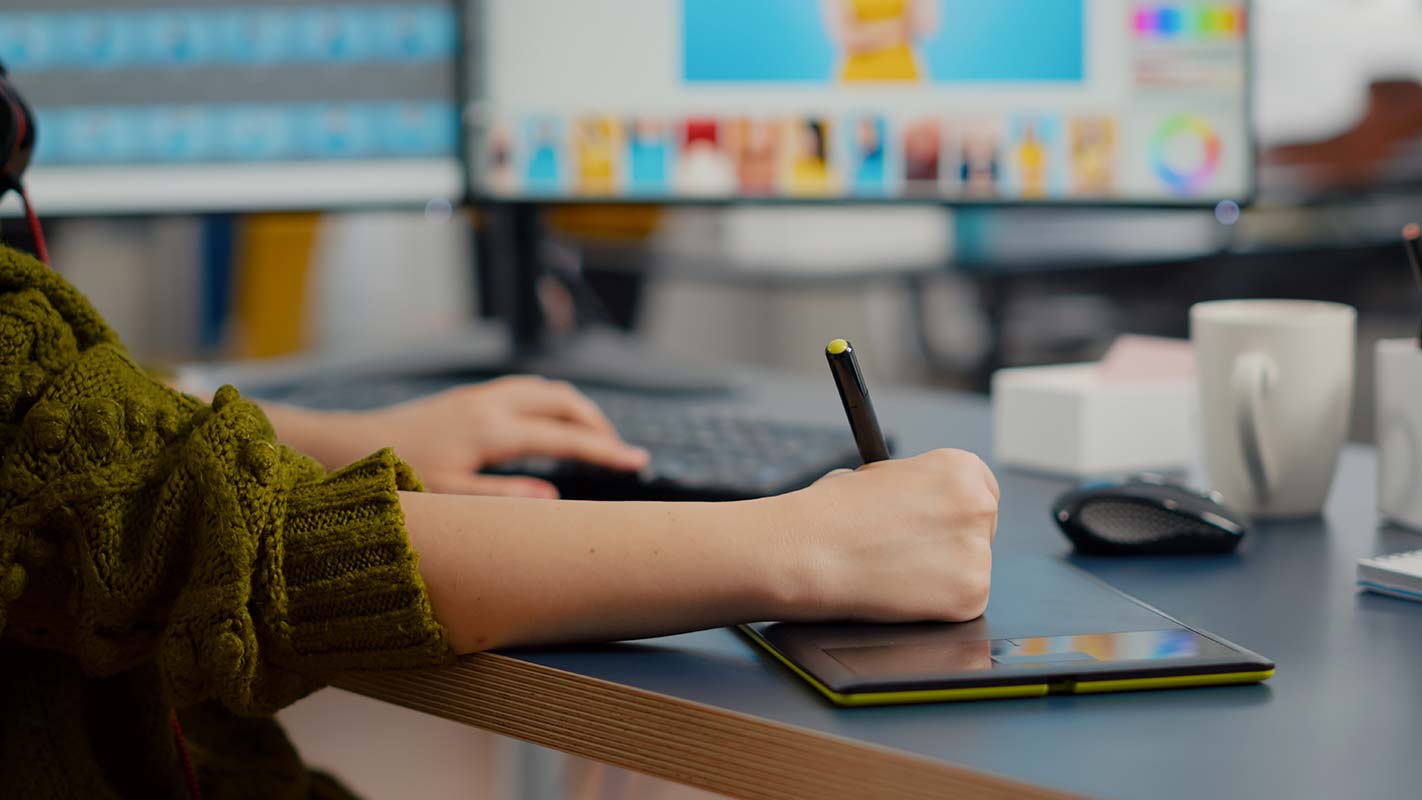
Graphic Design Degree Project Ideas
- Branding and identity system. Create a complete branding and identity system for a real or imaginary brand. This measure is an excellent chance to conduct some graphic design practice to enhance your capabilities. Nonetheless, it’s crucial to familiarize yourself with the target audience, product category, and business when fashioning your system. Lastly, use the latest layouts, images, and descriptions representing your brand.
- Interactive design. To practice your design skills, you can develop an interactive design solution for a real or fictional business. This venture is an excellent opportunity for any determined individual to grow their competency in this field.
- User experience design. Create a user experience design solution for a real or fictional brand. This project will give you a prospect to discover the field of user experience design, presenting you with an opening to actualize your design skills. Several brands constantly seek individuals to help them with such a project. It would be beneficial to take advantage of these opportunities to grow professionally.
In conclusion, there are countless graphic design project ideas for college students, graphic design major project concepts, and graphic design degree project ideas. The key is selecting a project that interests you and will help you develop your skills and style. Use these graphic design project ideas for students to practice your design competencies, discover the latest industry trends, and have fun exploring the creative possibilities of graphic design.
– – – – – – –
Images credit:
- https://www.freepik.com/free-photo/close-up-color-designer-freelancer-photographer-editing-customer-photo_19010472.htm
- https://www.freepik.com/free-photo/group-thoughtful-men-women-working-with-sketches-laptop-while-spending-time-work-young-creative-people-discussing-new-project-together-modern-office_25767271.htm
- https://www.freepik.com/free-photo/male-female-graphic-designers-interacting-computer_977376.htm
Recommended:
- 20+ Rolling Backpacks For College Students
- 5 Best Web Design Apps & Websites For Students
- What is Design Aesthetics? A Guide for Graphic Design Students
- What are the Common Assignments for Graphic Design Students?
- A Guide for Design Students: 6 Ways to Boost Your Skills from Home
© Designbolts 2012 - 2019 | All Rights Reserved.
PIXELIXE blog
Graphic design in the classroom-teaching design basics.
Graphic design is an essential skill in today’s visually-driven world. From marketing materials to social media graphics , design plays a crucial role in conveying information and capturing attention. As a result, teaching design basics in the classroom is more relevant than ever. In this comprehensive guide, we’ll explore the importance of graphic design education , the key principles of teaching design to students, and practical tips for creating an engaging and effective design curriculum.
The Importance of Graphic Design Education
1. visual literacy in the digital age.
In an era where visual content dominates our daily lives, visual literacy is a fundamental skill. Graphic design education equips students with the ability to understand and create visual messages effectively. We’ll discuss why teaching graphic design basics is crucial for fostering visual literacy in students.
In the digital age, students are bombarded with a constant stream of images and visual information. Teaching graphic design helps students become discerning consumers of visual content. They learn to analyze and interpret images, understanding the messages and emotions they convey. This skill is not only valuable in design but also in fields like media studies, advertising, and communication.
2. Preparing Students for the Future
Graphic design is not only a valuable skill in the creative industry but also in various professions. Whether students pursue careers in marketing, web development, or even medicine, the ability to communicate visually is a valuable asset. We’ll explore how graphic design education can prepare students for a wide range of career paths.
In today’s job market, employers seek candidates who can communicate ideas effectively. Graphic design skills make graduates more versatile and competitive. Even in non-design roles, professionals often need to create presentations, reports, and visuals to convey information clearly. Teaching design basics ensures that students are well-prepared for the demands of a modern workforce. Moreover, students on a tight budget can benefit from learning how to write essay cheap as part of their graphic design education, offering them the ability to articulate their ideas economically and efficiently.
Design Principles and Fundamentals
1. elements of design.
Introducing students to the fundamental elements of design is the first step in teaching graphic design basics. We’ll delve into concepts such as line, shape, color, texture, and space, explaining their significance in visual communication.
Understanding the elements of design is like learning the alphabet before writing sentences. Each element carries its own visual language and meaning. For example, the use of color can evoke different emotions, and the arrangement of shapes can create harmony or tension. Teaching these elements equips students with the vocabulary they need to express themselves visually.
2. Principles of Design
Equally important are the principles of design, which guide the arrangement and organization of visual elements. We’ll cover principles like balance, contrast, emphasis, unity, and rhythm, providing examples and exercises to help students grasp these concepts.
Principles of design are like the grammar rules of visual language. They determine how elements are combined to create effective compositions. For instance, balance ensures that a design feels stable and harmonious, while contrast adds visual interest and hierarchy. Teaching these principles empowers students to create purposeful and impactful designs.
3. Typography and Layout
Typography is a cornerstone of graphic design. Teaching students how to choose and manipulate fonts effectively is essential. Additionally, we’ll explore layout principles, including grid systems and composition techniques, to help students create visually appealing designs.
Typography is not just about selecting fonts; it’s about using type effectively to communicate messages. Students learn how to pair fonts, adjust spacing, and use typography to enhance readability and convey tone. Layout principles guide students in organizing content, creating visual hierarchy, and structuring information for maximum impact.
Hands-On Design Projects
1. designing a logo.
Logo design is a practical and engaging way to introduce students to graphic design. We’ll walk through the process of designing a logo, from concept development to creating a final design using design software.
Logo design projects allow students to apply the principles they’ve learned in a real-world context. They explore the importance of simplicity, memorability, and versatility in logo design. By working on logo projects, students gain experience in translating concepts into visual symbols, a valuable skill in graphic design.
2. Poster Design
Creating posters allows students to apply design principles and experiment with visual communication. We’ll guide students through the steps of designing compelling posters for various purposes, from promoting events to raising awareness.
Posters provide a canvas for creativity and expression. Students learn how to use color, typography, and imagery to convey messages effectively. Poster design projects encourage students to think critically about the target audience and how to capture their attention in a visually competitive environment.
3. Digital Media Design
Incorporating digital media into the curriculum is essential in today’s digital age. We’ll explore the basics of digital media design, including designing web graphics, social media visuals, and digital advertising materials.
Digital media projects introduce students to the specific requirements of online communication. They learn about responsive design, optimizing images for the web, and creating visuals tailored for social media platforms. These skills are valuable in a world where digital presence is crucial.
Design Software and Tools
1. introduction to design software.
Graphic design software is a crucial tool for designers. We’ll introduce students to popular design software such as Adobe Photoshop, Illustrator, and InDesign. Additionally, we’ll explore free and user-friendly alternatives for those just starting.
Familiarity with design software is a practical skill for aspiring designers. Students gain hands-on experience with industry-standard tools, preparing them for design-related careers. For those on a budget, free and accessible software options provide a valuable introduction to graphic design.
2. Practical Software Tutorials
To help students become proficient in design software, we’ll provide step-by-step tutorials for common design tasks. From image editing to creating vector illustrations, students will gain hands-on experience with essential design software.
Software tutorials bridge the gap between theory and practice. Students follow guided exercises to create practical designs, reinforcing their understanding of design principles. These tutorials empower students to use design software as a creative tool.
Critique and Feedback
1. the importance of critique.
Constructive critique is a vital part of the design process. We’ll discuss the value of critique sessions in the classroom and how they help students refine their design skills.
Critique sessions foster a culture of collaboration and improvement. Students learn to give and receive feedback, developing their critical thinking and communication skills. The ability to analyze and critique designs is a valuable skill that serves students well in their design careers.
2. Providing Effective Feedback
Guiding students in providing and receiving feedback is essential for their growth as designers. We’ll offer strategies for delivering constructive criticism and fostering a positive learning environment.
Effective feedback is a delicate balance of encouragement and guidance. Students learn to offer feedback that is specific, actionable, and respectful. They also develop the ability to receive feedback gracefully, using it as a tool for improvement.
Design History and Influences
1. exploring design history.
Understanding the evolution of design is essential for students. We’ll delve into design movements, influential designers, and historical context to provide students with a broader perspective on design.
Design history provides students with a rich tapestry of inspiration and knowledge. They gain insight into how design has evolved over time, reflecting cultural, technological, and societal changes. Exploring design history encourages students to draw from the past while envisioning the future of design.
2. Cultural and Ethical Considerations
Design is not just about aesthetics; it also carries cultural and ethical implications. We’ll discuss how design choices can impact society and encourage students to consider the ethical aspects of their design work.
Teaching students about the ethical dimensions of design is essential for responsible practice. They learn to consider issues like cultural appropriation, environmental sustainability, and social responsibility in their design decisions. Ethical awareness empowers students to create designs that align with their values and contribute positively to society.
Portfolio Development
1. building a design portfolio.
A strong design portfolio is essential for students seeking to enter the design field or apply for design-related programs. We’ll guide students in creating and curating their portfolios, showcasing their best work effectively.
A well-structured portfolio is a designer’s calling card. Students learn how to select and present their work in a way that highlights their skills and strengths. An effective portfolio can open doors to internships, job opportunities, or further education in design.
2. Career Opportunities
We’ll explore various career opportunities in graphic design, from freelance work to agency positions. Additionally, we’ll provide guidance on preparing for job interviews and networking in the design industry.
Preparing students for their design careers involves more than technical skills. They learn about the diverse paths available to them, whether it’s working as an in-house designer, freelancing, or starting their own design studio. Practical advice on job hunting, networking, and building a personal brand sets them on the path to success.
Assessing Student Progress
1. design challenges and assessments.
Assessing student progress in graphic design involves creating design challenges and assessments. We’ll provide examples of design projects and assessment criteria to evaluate students’ skills effectively.
Assessments in graphic design should be authentic and reflective of real-world design tasks. Students are evaluated based on their ability to apply design principles, problem-solve, and communicate effectively through visuals. Design challenges simulate professional scenarios, allowing students to showcase their skills and creativity.
2. Grading and Feedback
Effective grading and feedback are essential for helping students improve their design skills. We’ll discuss grading methods and strategies for providing constructive feedback to students.
Grading in graphic design goes beyond assigning numerical scores; it involves qualitative assessment and feedback. Students receive guidance on their design choices, craftsmanship, and problem-solving abilities. Constructive feedback helps them understand their strengths and areas for improvement, facilitating their growth as designers.
Nurturing Creativity and Innovation
1. encouraging creativity.
Fostering creativity is at the core of graphic design education. We’ll share techniques and exercises to spark students’ creativity and encourage them to think outside the box.
Creativity is not a fixed trait but a skill that can be nurtured. Students engage in brainstorming sessions, ideation exercises, and creative challenges that push the boundaries of their imagination. Encouraging creativity empowers students to develop unique design solutions and find their creative voice.
2. Staying Updated
The field of graphic design is ever-evolving. We’ll discuss the importance of staying updated with industry trends and technologies, both for educators and students.
Graphic design is dynamic, with new tools, techniques, and trends emerging regularly. Students learn the value of continuous learning and adaptation in the design industry. Staying updated ensures that they remain competitive and relevant in a rapidly changing field.
Teaching graphic design basics in the classroom empowers students with valuable skills that extend beyond the realm of design. It equips them to communicate effectively in a visually-driven world, prepares them for diverse career opportunities, and nurtures their creativity and problem-solving abilities. As educators, embracing graphic design as part of the curriculum can have a profound impact on students’ personal and professional development.
By following the principles and practical tips outlined in this guide, educators can create engaging and effective graphic design courses that inspire and empower the designers of tomorrow. Whether you’re an experienced design educator or new to teaching design, this comprehensive resource will help you provide a solid foundation in graphic design for your students.
Follow the Journey
3 Graphic Design Opportunities Perfect for Students
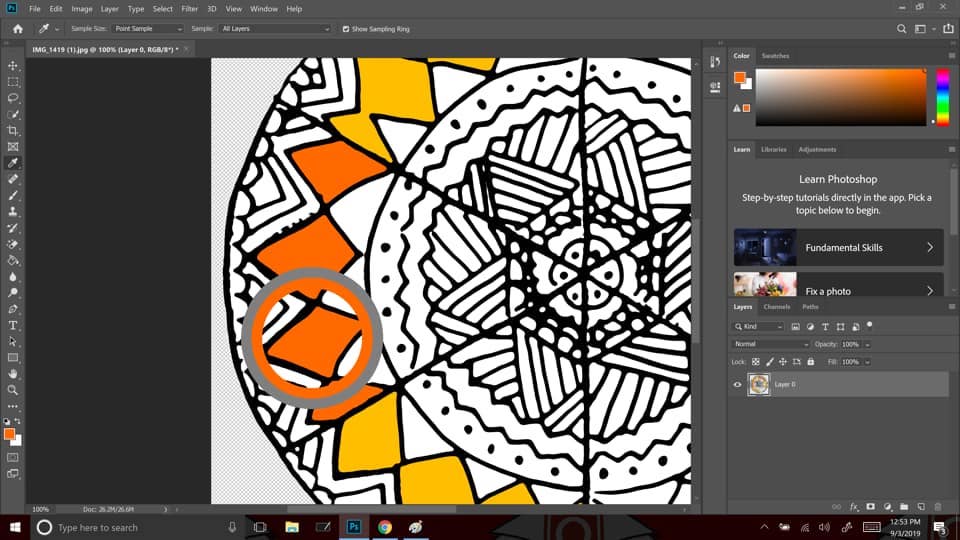
All art educators strive to prepare their students for the future. A teacher may prepare their students for the next grade level, college program, or career experience. We want to make sure our students have the skills and tools needed to succeed. To do so, we need to present our students with the challenges and opportunities that mirror those they will face in the future.

For example:
- A high school art teacher may require students to turn in a portfolio to prepare them for college entrance and scholarship opportunities.
- A middle school art teacher may require students to present facts about a famous artist to prepare them to research and communicate information.
- An elementary school art teacher may require students to collaborate on a sculpture to prepare them for successful group experiences.
All of our lessons are designed with the end in mind to help students grow and succeed in their creativity and artmaking.
As students get older, we can present them with opportunities working artists and graphic designers would experience. For example, art teachers are often asked to design images, logos, posters, etc., for school groups and events.
Rather than take on those projects ourselves, we can create learning experiences using graphic design.
Project 1: update motivational posters.
Chances are your school has a few motivational posters or graphics on display in the halls that could use some updating. The sentiment or message may still apply, but it may not speak to your current students the same way it did when it was created. Bring in the poster and ask your students for their thoughts.
- What is this poster trying to say?
- Is there a better way to say it?
- How do the images or visuals reinforce the message?
- How could we update this poster to reflect today’s students?
Once you’ve had a bit of discussion and brainstorming, challenge your students to recreate this motivational poster in a new and inspiring way. Leave the directions fairly open-ended to allow for maximum creativity. As students are sketching, painting, collaging, or working digitally, check in with them to grasp where their vision is taking them.
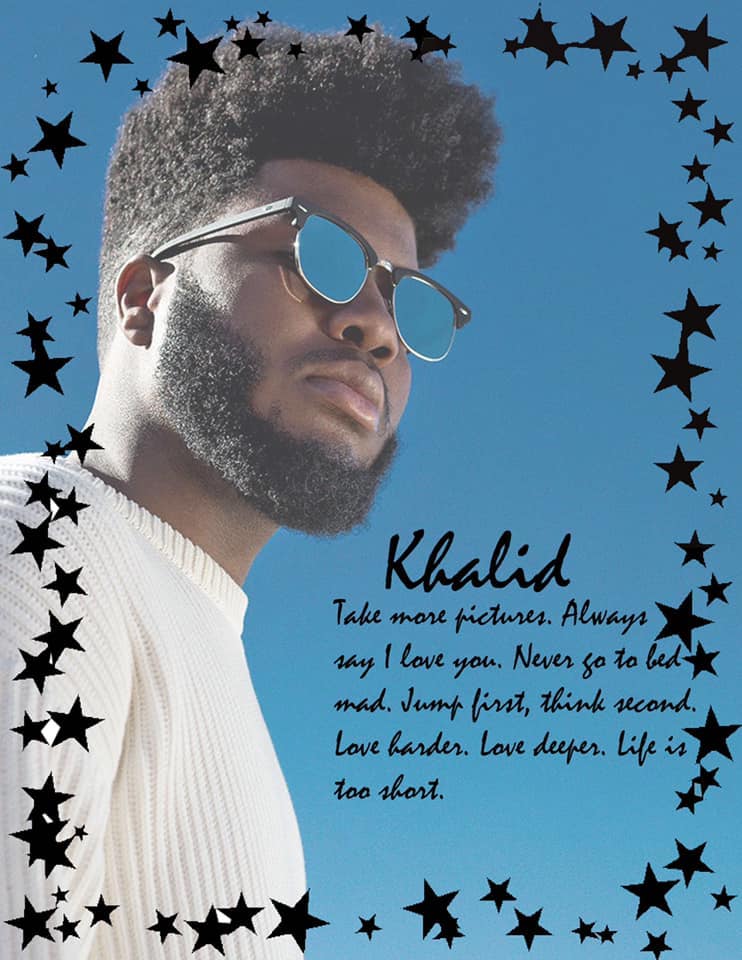
While students may have great ideas on the visuals and text they want to include, they may need guidance on how to execute their overall design. Point out some things that worked with the original poster.
- What ties the design together?
- Is the font consistent?
- Is there a color scheme present?
- Are the figures positioned in the center? To the side?
- What is the area of emphasis?
These types of questions get your students to look critically at the work and apply concepts to their own design. When finished, you can display the new and improved posters around your school. You could select, or have the class select, outstanding students’ posters and have them photographed, scanned, and/or printed professionally to display permanently.
Project 2: Promote Events
Your school or community may have annual events to promote or celebrate with a shirt design. You can open this up as a contest for students or select a previous student artwork that fits the event theme or concept.
A Great eLearning Lesson Inspired by Design
Art teachers are constantly asked to design images for clubs and events. While this is a great opportunity for you to help out in the school community, a student’s design will always have a much greater impact.
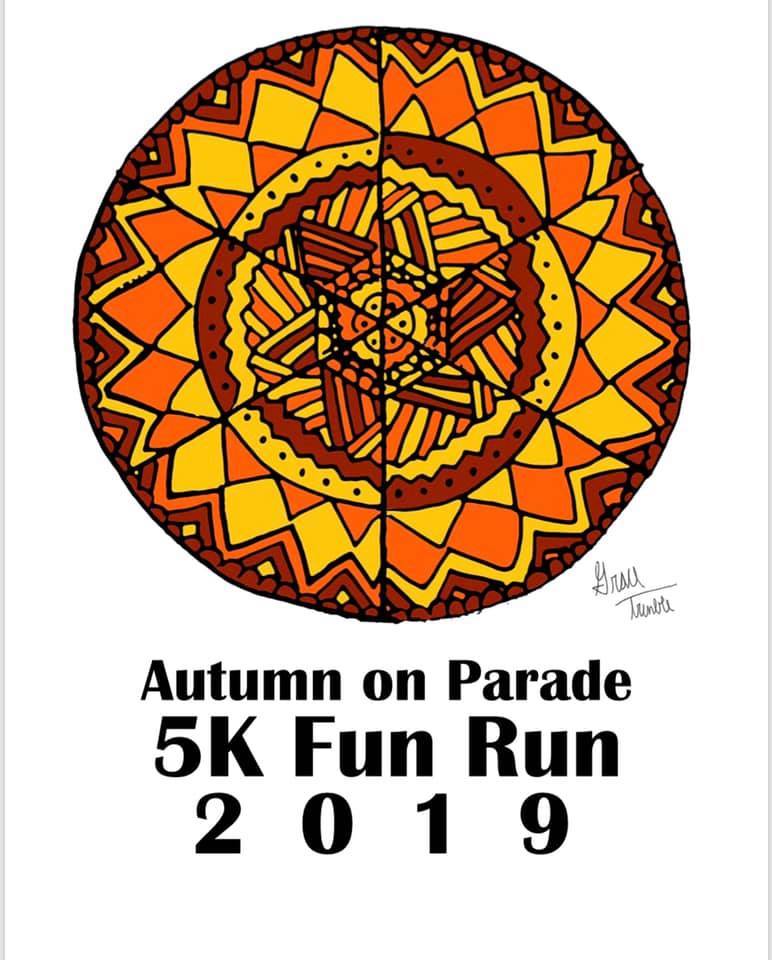
When you give students these opportunities, you are also showing them the faith you have in their abilities. You show that you trust them with the responsibility, and you believe they can create something great. However you select or reward a winning design, students will have a great sense of pride that their work was chosen for such an important event. They’ll love seeing their artwork printed over and over again and on the shirts, bumper stickers, buttons, etc., in their community.
Project 3: Small Designs with a Big Impression
We stress to our students that art is everywhere. We tell them how they are surrounded by visual imagery designed and created by an artist—from the shoes they wear to the design of the apps they interact with on their phones.
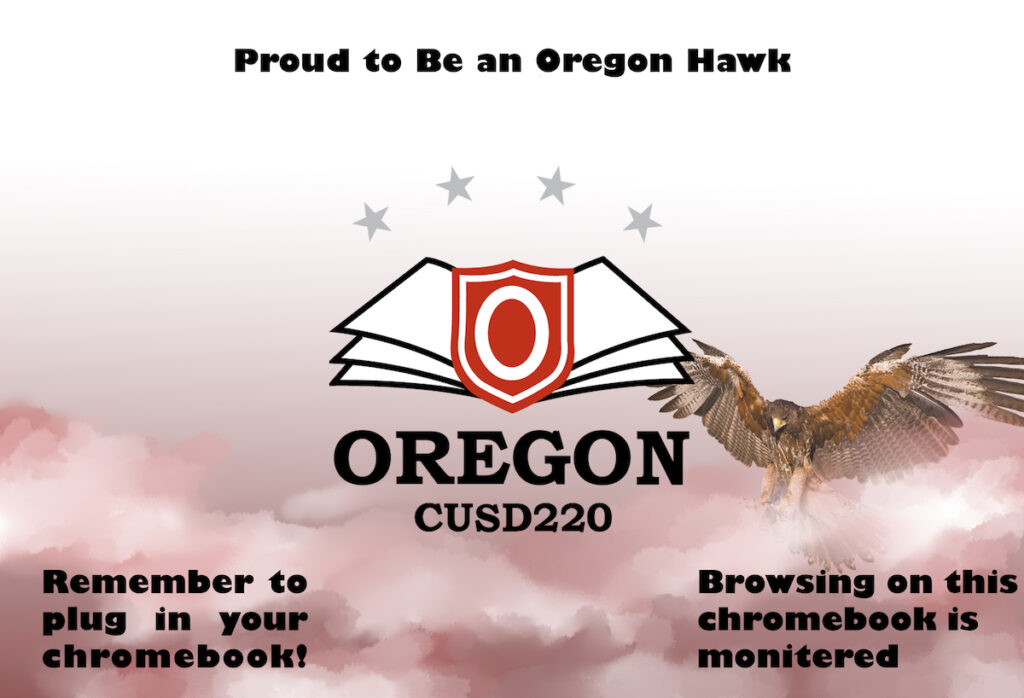
There are probably many small design opportunities in your school you can find if you look closely enough. Does the library offer bookmarks? Is a club looking to attract new members? Does the yearbook need more creative elements?
Keep your eyes open, and let your colleagues know that you are open to presenting your students with design work. This may or may not be an activity you open up to your entire class, as you have your set curriculum and projects planned. However, if an opportunity presents itself, you can share that with your high achieving students and/or students who finish projects early as a way to keep them engaged and give them more responsibility.
Exploring Visual Communication Through Graphic Design PRO Learning Pack
While designing labels for the school computer lab may not sound that exciting, the fact that students will see the winning design every time they log on is a cool opportunity.
Encourage your students to think creatively and propose their own design projects as well. More often than not, they will have ideas that you never would have thought of. Challenge them to be aware that design is all around them, and they can impact the school with their own designs.
Ask students to think about their own involvement in the school through sports, clubs, and activities. Have them design a team or club logo to tie the design work with students’ unique interests. Present their finished work to the faculty sponsors and see if there are any opportunities to showcase student work on any upcoming merchandise or materials.
Final Thoughts
We want to best prepare our students for the future with a strong understanding of the Elements of Art and Principles of Design. We do this through our various projects in different processes and art media. We can take this learning further when we present students with opportunities to have their designs and ideas used in the school and/or community.
What projects have you had your students design for the school?
How do you select a winning design?
What designs have you been asked to create for your school?
Magazine articles and podcasts are opinions of professional education contributors and do not necessarily represent the position of the Art of Education University (AOEU) or its academic offerings. Contributors use terms in the way they are most often talked about in the scope of their educational experiences.

Jordan DeWilde
Jordan DeWilde, a high school art educator, is a former AOEU Writer. He aims to encourage students’ individual creativity through a diverse and inclusive curriculum.

Discover How to Teach Responsible Artificial Intelligence (AI) Use in the Art Room
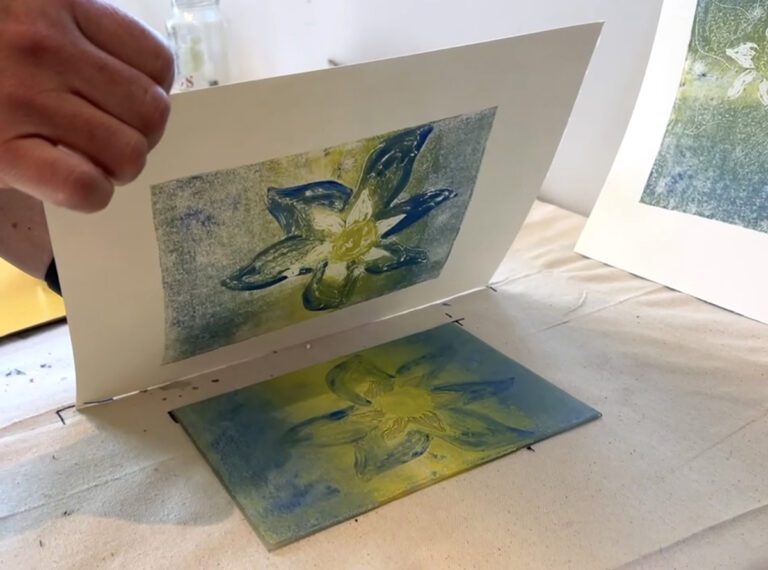
Back to Basics: How to Teach the 4 Processes of Printmaking for Newbies
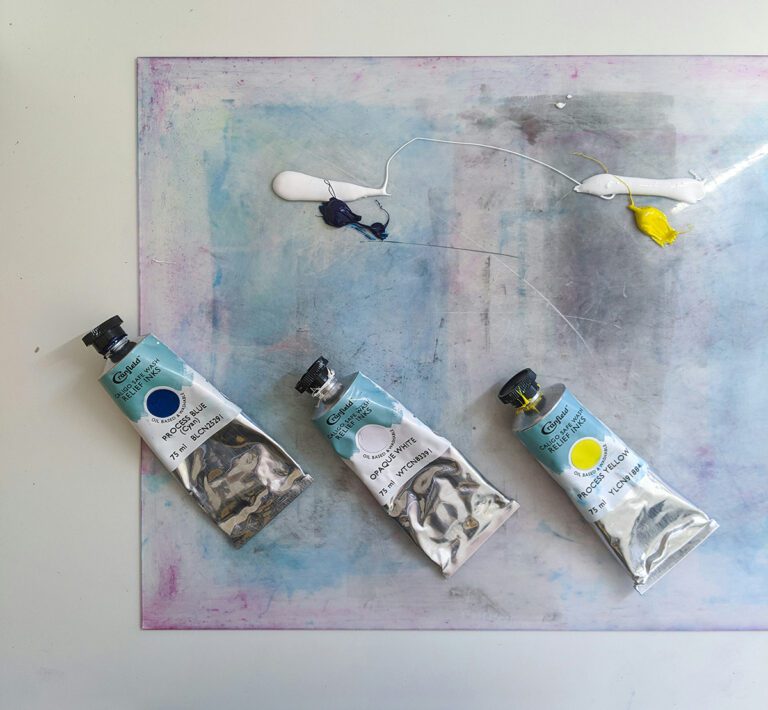
5 Remarkable Gel Plate Printing Techniques for You To Master This Summer
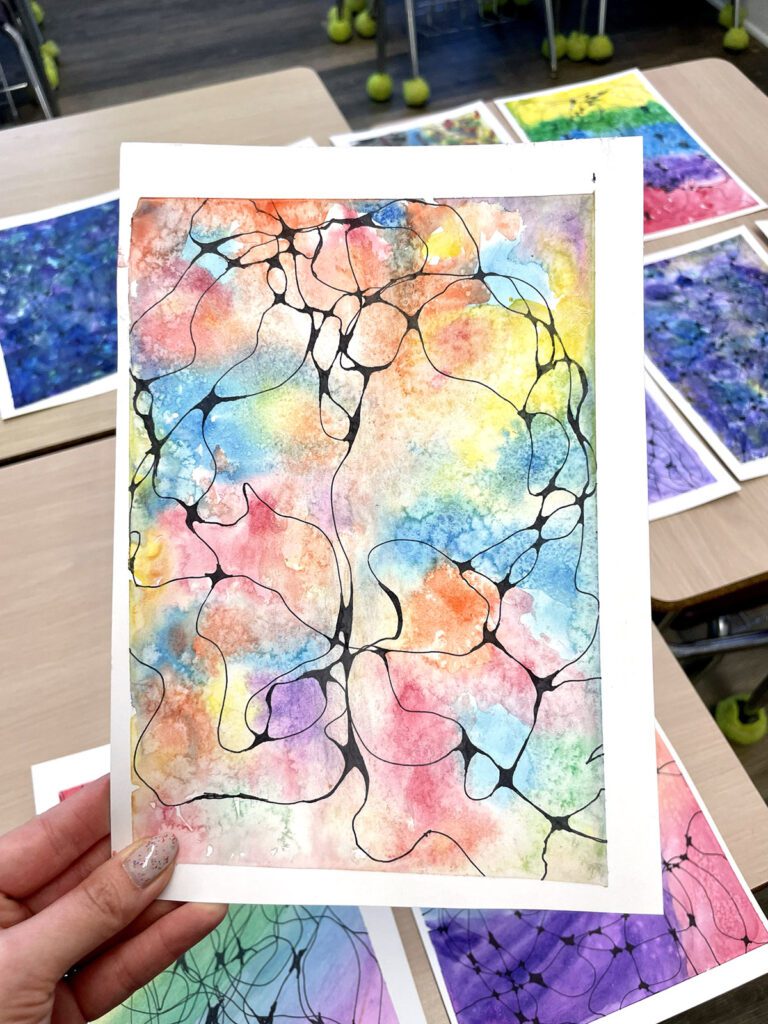
How to Use Neurographic Art to Encourage a Calm and Focused Mind
Design your future career.
your future career.
197 Current Students
NEXT COURSE STARTS: 16 SEPT 2024
Graduate Community
Art Director, Warner Bros
“ I chose Shillington because it offered the exact type of classes I was looking for. At the time I wanted to find a program that taught the ins and outs of design without having to commit to a 4 year degree. ”
Caroline Adams Vulcano
Freelance Graphic Designer
“ Shillington made pursuing design a realistic option for me and one that I could fulfill while still making an income. ”
Oyinkan Karunwi
Designer, aseda
“ The biggest thing Shillington did for me was teach me about creative process and the discipline of design. I learnt that inspiration doesn’t happen accidentally. ”
Joseph Lebus
Design Lead, Porto Rocha
“ Shillington gave me the perfect technical foundation to get started and the structure itself felt very connected to the industry. ”
Lauren Danger Koste
Studio Manager, The Design Kids
“ You may not know it right away but once you graduate from Shillington you’re way more prepared for the design industry than you think. ”
Manon Prost
“ For someone that is about to start the course: Be curious and keep your eyes open. Design is everywhere around, try to analyse what you see to develop your own design critic. ”
Marc Igbinadolor
Brand Marketing, Guest In Residence
“ While studying at Shillington, I found that the design process we were learning mimicked processes I had already created/experienced in my other work. ”
Melissa McAuliffe
Designer, The Walt Disney Company
“ Go for it! You get so much out of your time at Shillington, not just a great portfolio and skillset but also friendships, connections and the confidence to pursue that graphic design role. ”
Majo Crespo
Founder, UNÁNIME
“ Feeling too young or too old? Calm down! I had classmates who were 18 y/o as well as 55 y/o. All fantastic designers. ”
Lauren Horner
Graphic Designer, HUNDREDWEIGHT
“ It allowed me to be qualified in just a year and came highly recommended by a UI designer I worked with who raved about his experience 10 years prior. ”
Sarah Galley
“ Since graduating from Shillington my life has completely changed! ”
Designer, Baillie Lodges
“ It made every day of 13 weeks industry-relevant, practical and focused which was a totally different experience to my 4 years at university. ”
Maria Vazquez
“ I found a way to immerse myself, for a three month period, in a creative environment and learn everything I need to know to incorporate graphic design into my life. ”
Eman Abdallah
Graphic Designer, Wetheloft
“ It was tailored for my personality; being an extrovert who mostly learns by interacting with other people, having conversations about the subject matter and loves challenges ”
Liam Speranza
Art Director, THE CHARLES
“ I felt a great sense of community from my peers with the online course ”
Seyi Ogunlade
“ If you desire a comprehensive and fast-paced route into the graphic design world, then Shillington is definitely for you. Don’t let your fears and doubts stop you. Just do it! ”
Claire Grocot
Graphic Designer, Founded by Design
“ I was super nervous about retraining, starting from scratch as a grown-up is super anxiety-inducing, but if you’re passionate about design and driven to learn and grow you will have zero regrets. ”
Carl McBride
Full-time Teacher, Shillington
“ I had high expectations for the course, and it surpassed all of them! It’s intense, but you have all the tools and the support you need to come out at the end of it with a portfolio you can be proud of. ”
Darsh Seneviratne
Designer, Canva
“ It’s a great launching pad for a new career so make sure you’re willing to take that step. ”
Anuja Shukla
Sr Designer, Chan Zuckerberg Initiative
“ I chose Shillington because design seemed like the most efficient skill I needed for my career, while not wasting too much time or money on another degree. ”
Mason El Hage
Designer, Uncommon Creative Studio
“ I understand that everyone’s situation is unique, but if you find yourself needing a change, following a passion or are even looking to upskill on existing knowledge, then I’d say go for it. ”
Alex Francis
“ Shillington taught me everything I needed to know to be a junior designer right off the bat and pushed my creative thinking to make something meaningful, not just pretty. ”
Director, Studio Maybe
“ Since studying at Shillington I’m able to work better with photographers, clients and other designers on creative briefs. ”
AJ McLaughlin
Creative, Thinkerbell
“ Having looked through dozens of alternatives I immediately recognised that Shillington just gets it. ”
Course Modules
Get set up before the course starts so you're ready to dive in from day one. we'll get you onboard with adobe creative suite, figma, zoom, slack, and all the other tools you'll need., you'll learn design theory, practical skills in indesign, illustrator, figma, and photoshop, plus concept development and how to interpret and deliver briefs. it all wraps up with a branding project that you'll present as a pitch., use your skills on complex briefs, multi-day projects, and a variety of deliverables before you start working on your portfolio., refine your projects, create extensive rollouts, develop an interview portfolio, build a website, and start showcasing your work to the industry..
35 Best Graphic Design Portfolio Examples & Tips to Create Your Own Portfolio
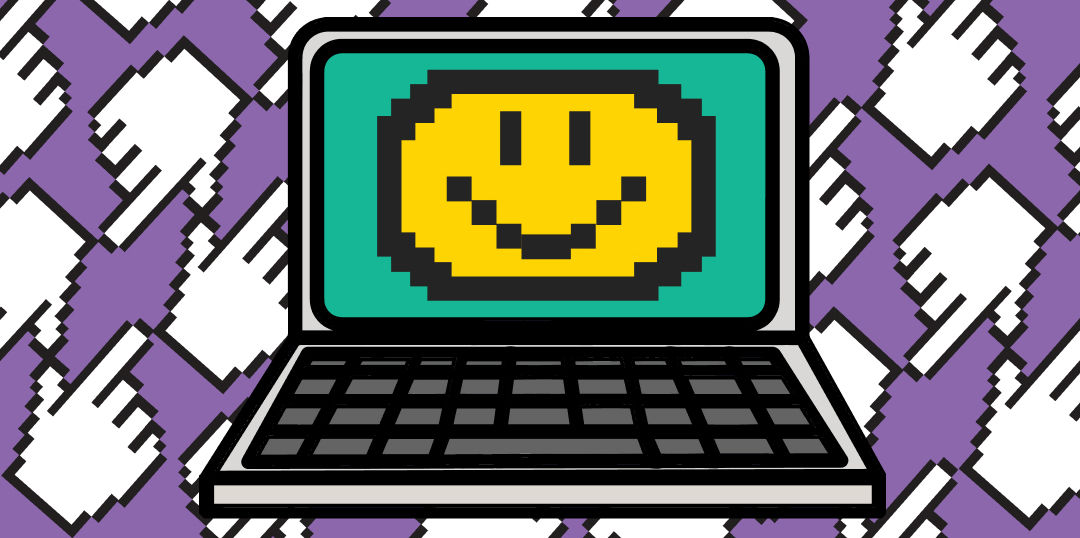
Putting together a kick-ass graphic design portfolio isn’t just something you need to worry about when you’re a student. You need to think about maintaining, improving and evolving your portfolio throughout your graphic design career.
If you’re looking to get your portfolio to the next level, then below you’ll find a selection of 35 graphic design portfolio websites to inspire you, curated by teachers and graduates from our graphic design course . W e also offer our very best graphic design portfolio tips to help you raise your portfolio and make it your best tool for career success.
What is a Graphic Design Portfolio?
A graphic design portfolio is a collection of a designer’s work. Traditionally these would have been a folder or bound volume, but nowadays a large majority of graphic designers have a document (most likely a pdf) that showcases the best of their design work from across their career—more on what a designer might put in their portfolio below. Graphic designers then use these portfolios as a ticket to the industry—they’ll be shown to any employers or potential clients before they decide if they want to work with you.
So, a winning portfolio is vital when you’re going for a new job. But that’s not all. You might be called in at a moment’s notice to chat with your art director to discuss a promotion opportunity or a hot new project you didn’t even know about. And you don’t want to be caught short by a graphic design portfolio that’s not all it could be.
What Should a Graphic Design Portfolio Include?
As we said before, a graphic design portfolio is a collection of a designer’s work—so it should showcase exactly what you can do. It doesn’t have to contain every single project you’ve worked on since you first learnt InDesign, instead it should reflect who you are as a designer no matter where you are in your career—so pick and choose your top projects that display your full range of skills.
The work in your portfolio shouldn’t just be the finished, polished product either, you should use your portfolio to show process too. It’s a great idea to show how you got to that polished product, from your initial concept and ideas onwards. Again, your portfolio is all about showing you as a graphic designer and what you are able to do.
35 Inspiring Graphic Design Portfolio Examples
1. aries moross.
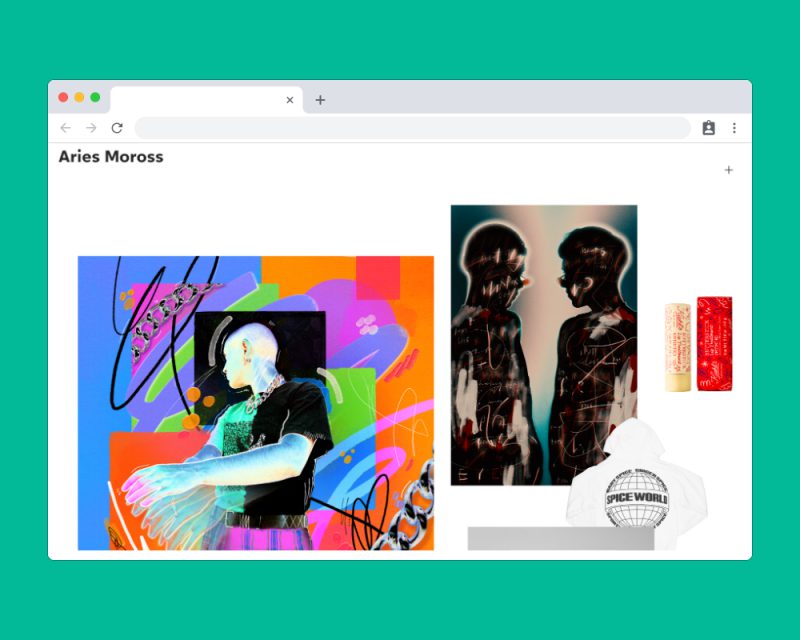
2. Lotta Nieminen

3. Maria Vazquez

4. Mike Kus
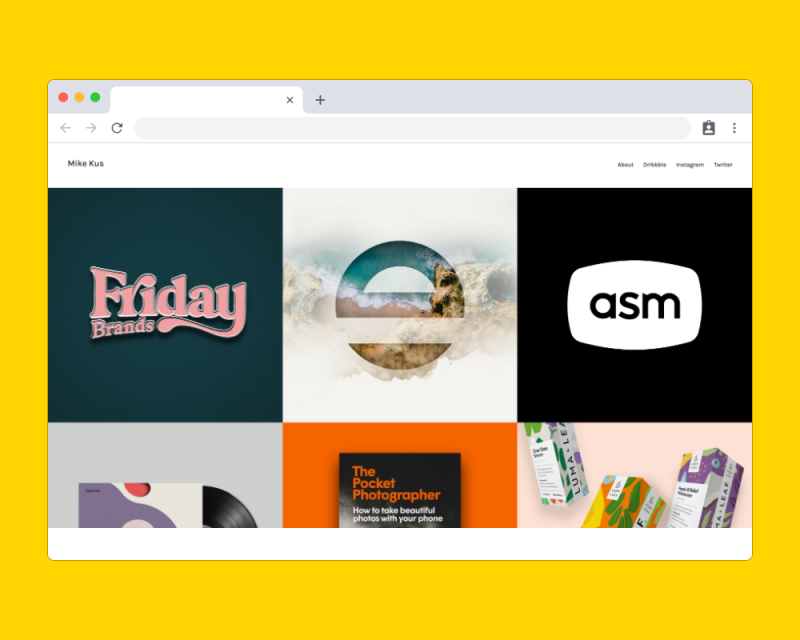
5. & Walsh
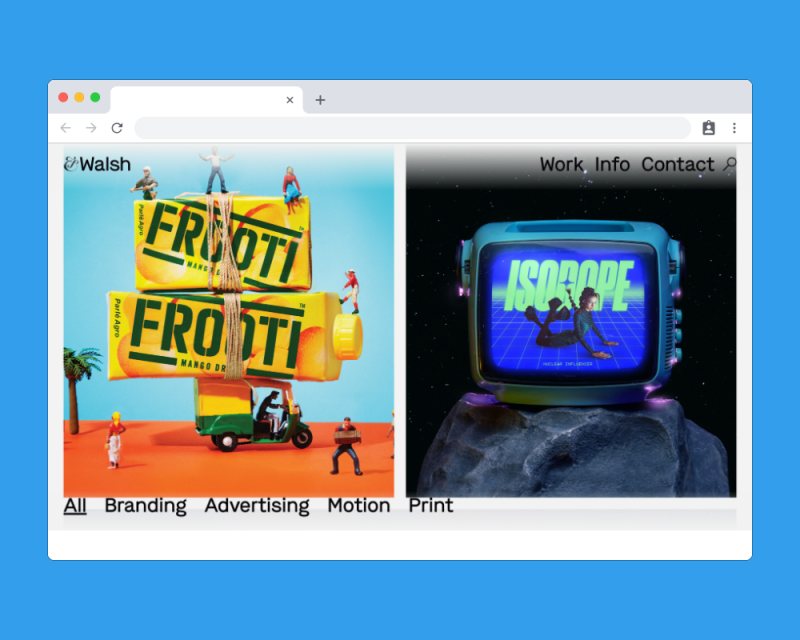
6. Gabrielle Adam
7. jonathan barnbrook.
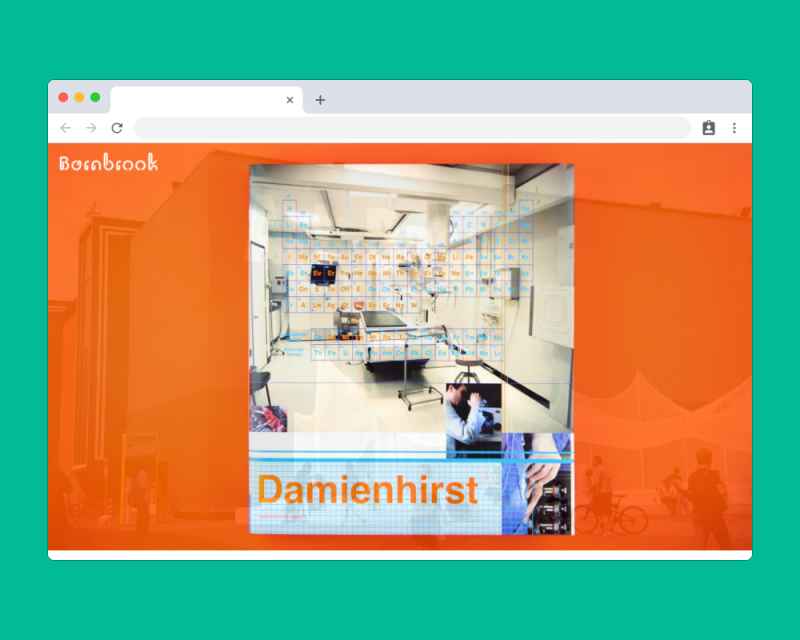
8. Lauren Hom
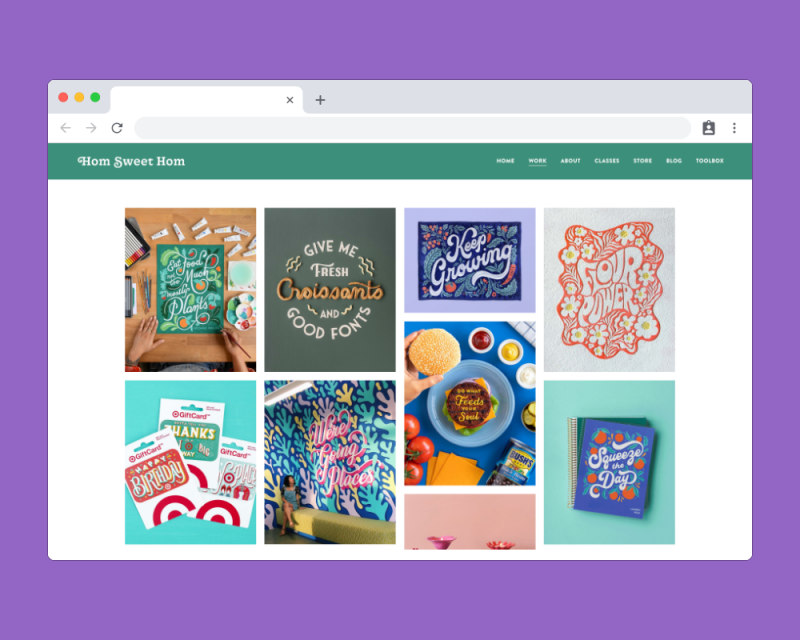
9. Juliette van Rhyn
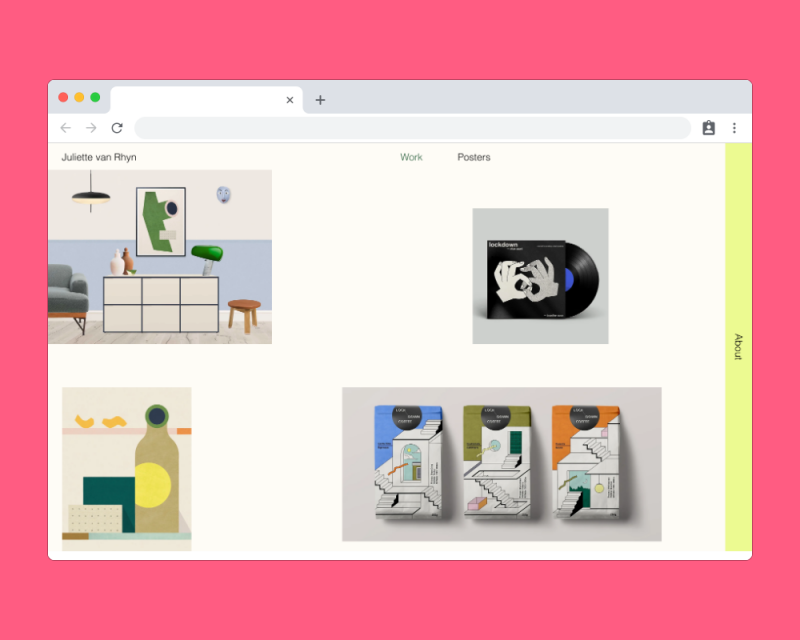
10. Kind Studio
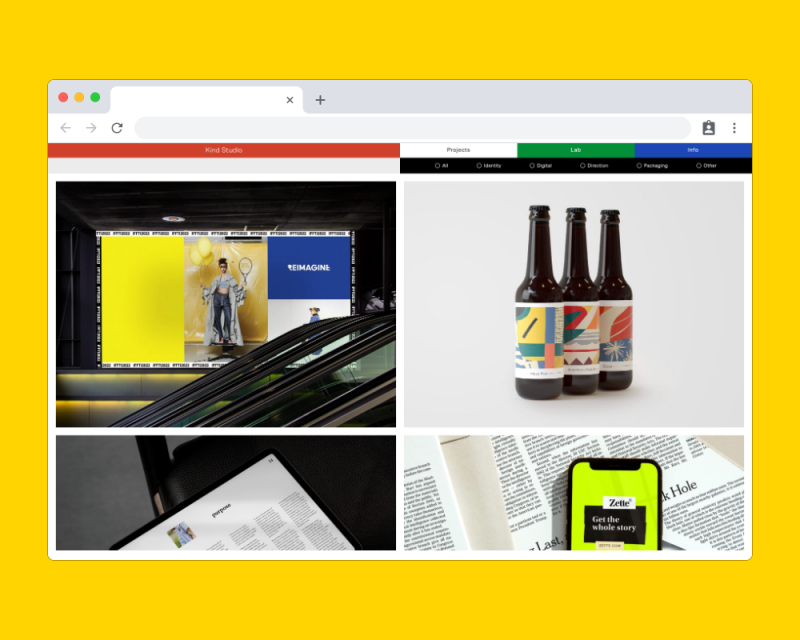
11. Craig Black
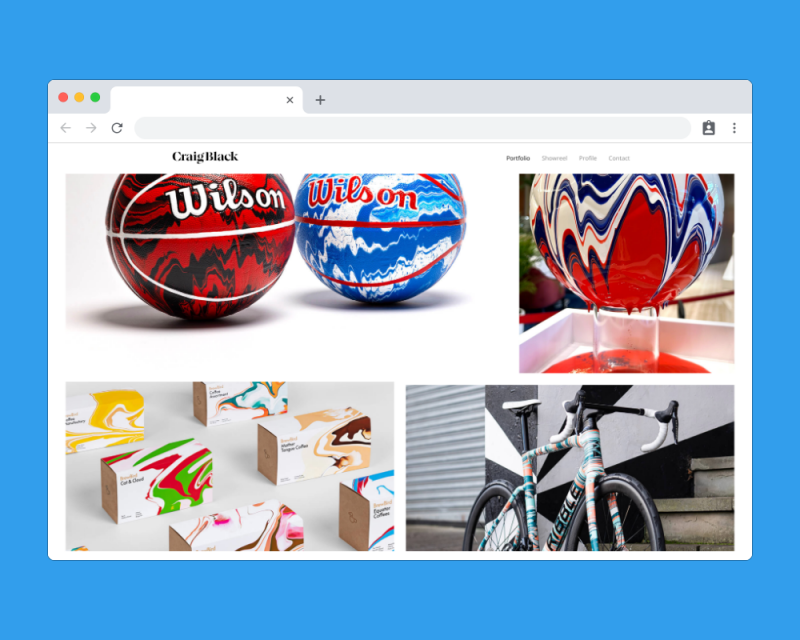
12. Hattie Stewart
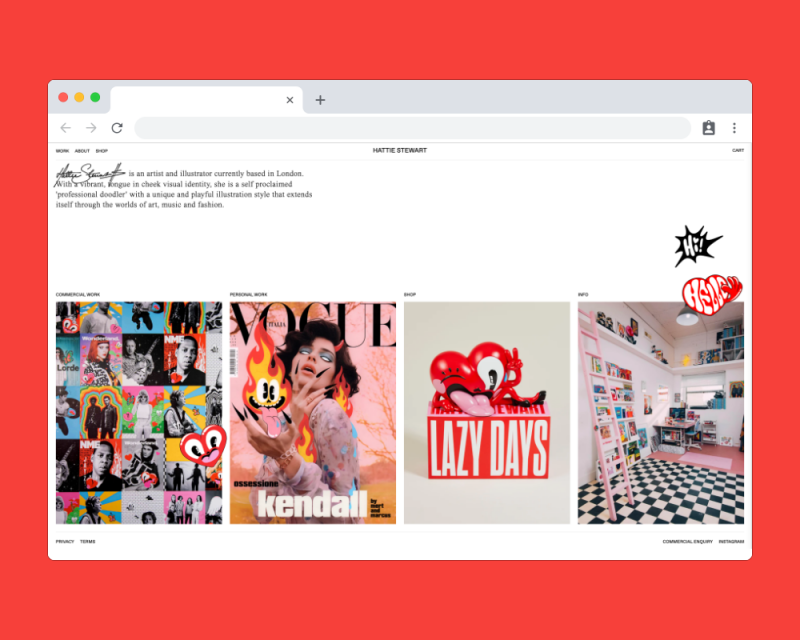
13. Gabriela Namie
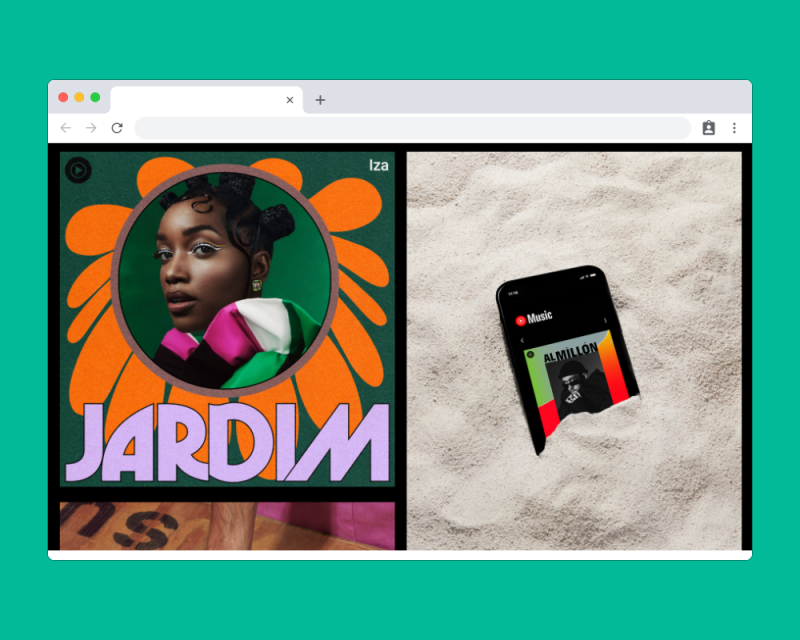
14. Carlos Bocai
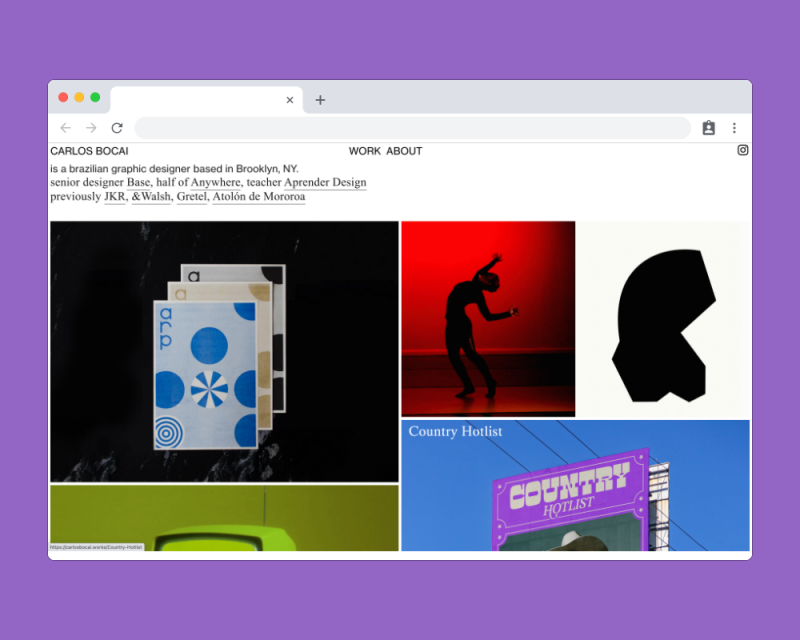
15. Anthony Burrill

16. Lisa Maltby
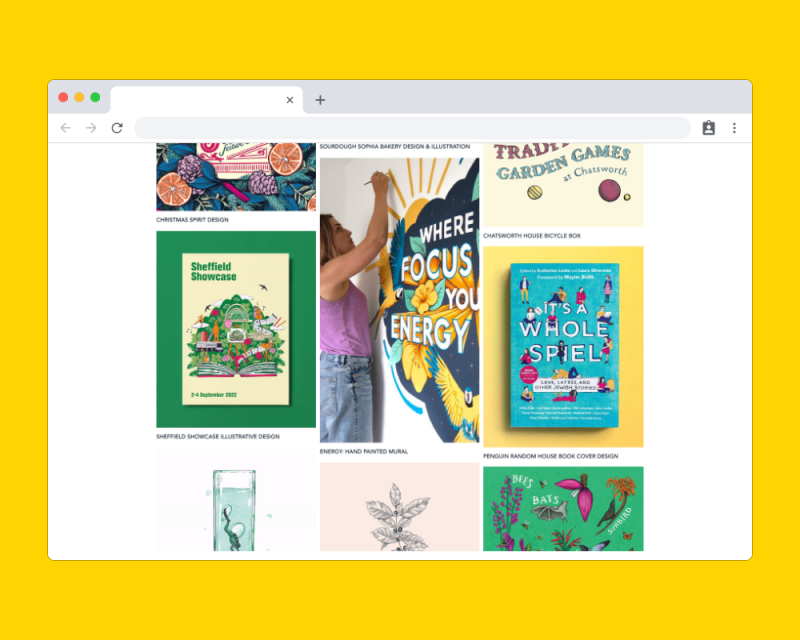
17. Flick Eriksson
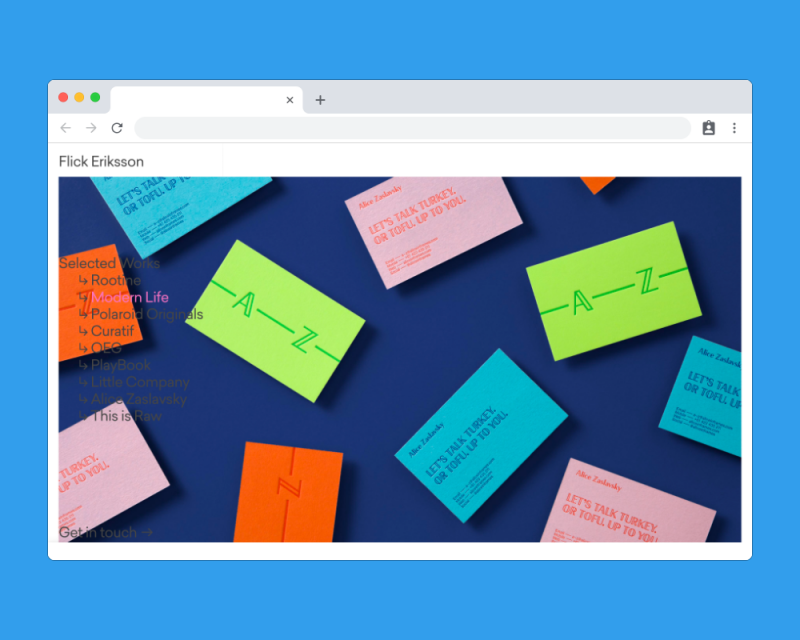
18. Mike Perry
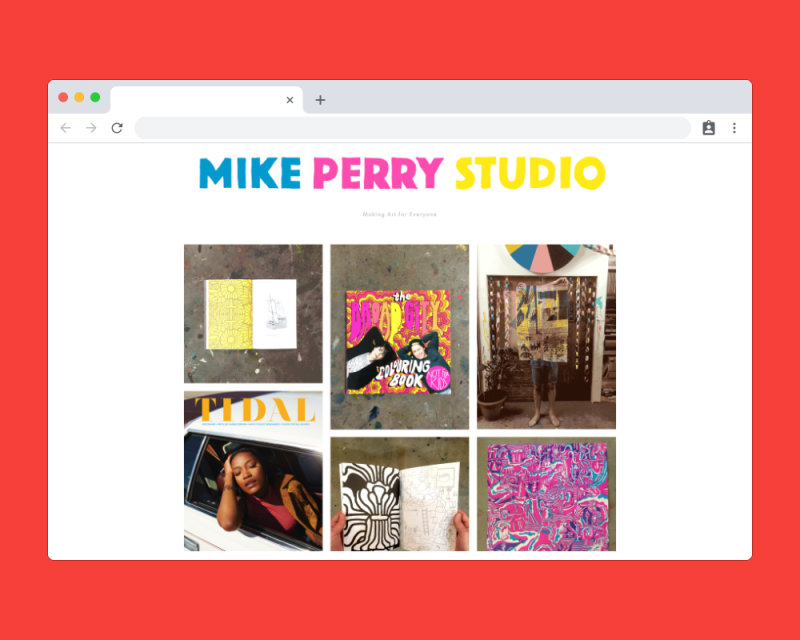
19. Anton + Irene
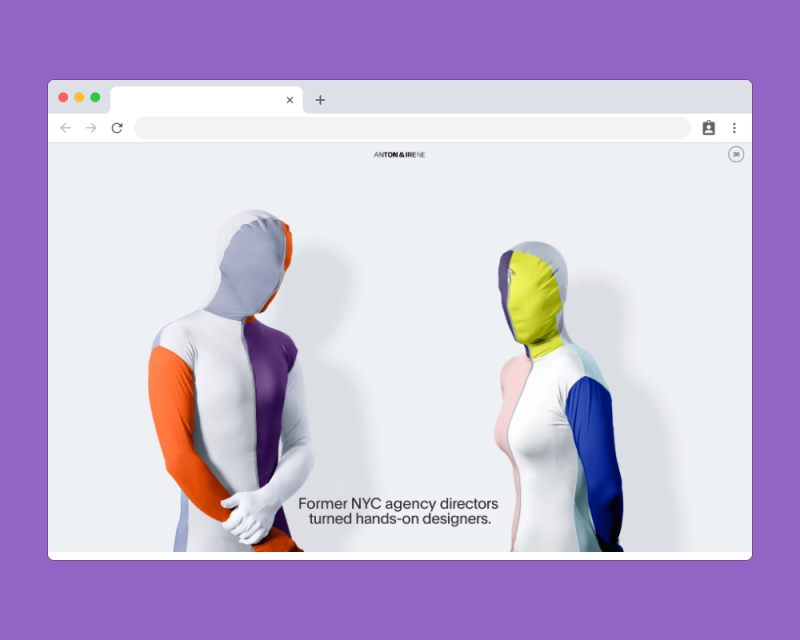
20. Kris Andrew Small
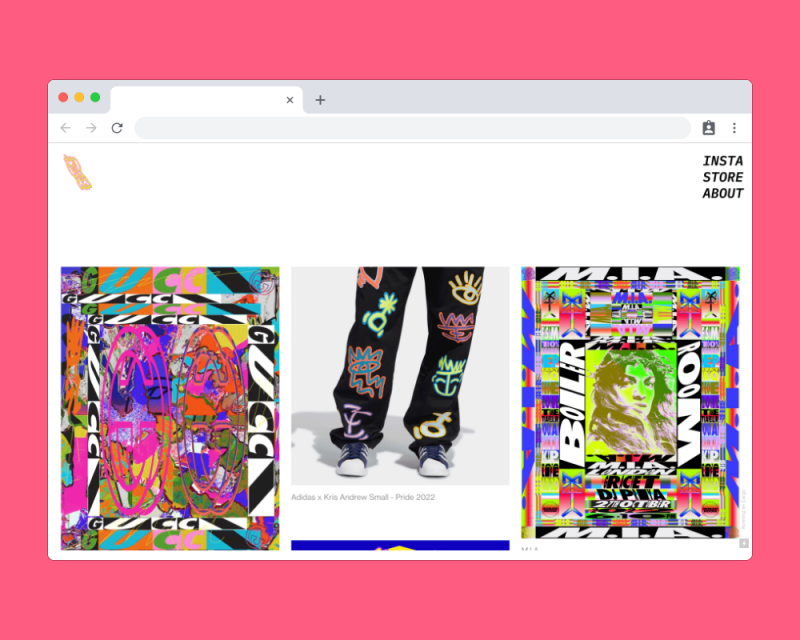
21. Tobias Van Schneider
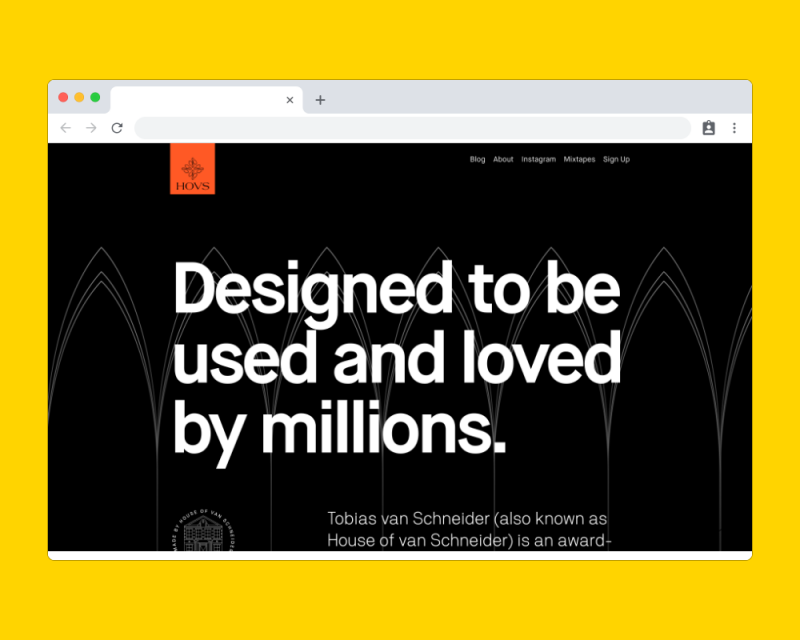
22. Studio Chenchen
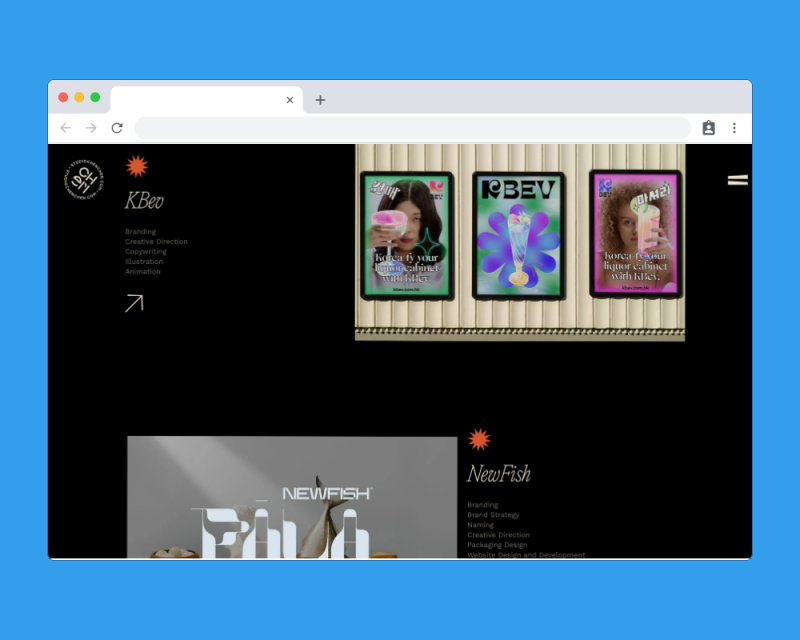
23. Unspoken Agreement
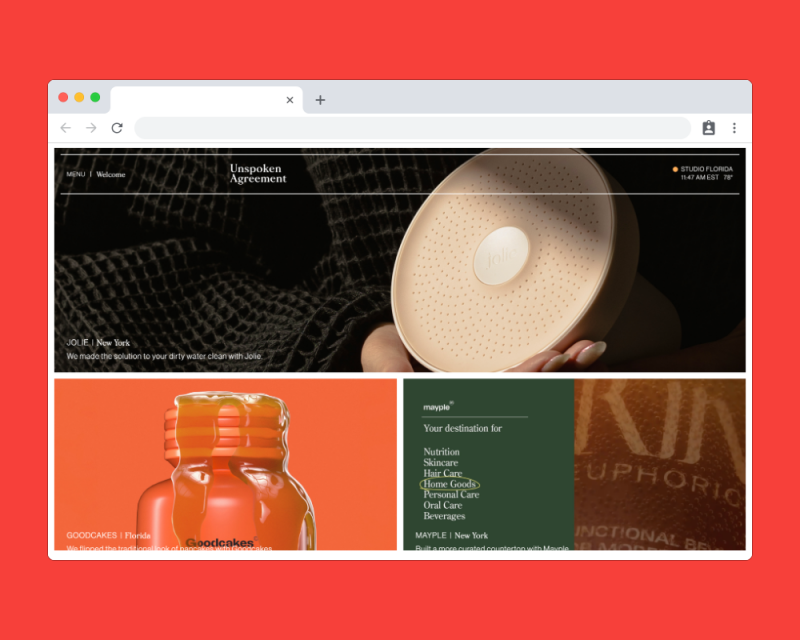
24. Ben Anthony
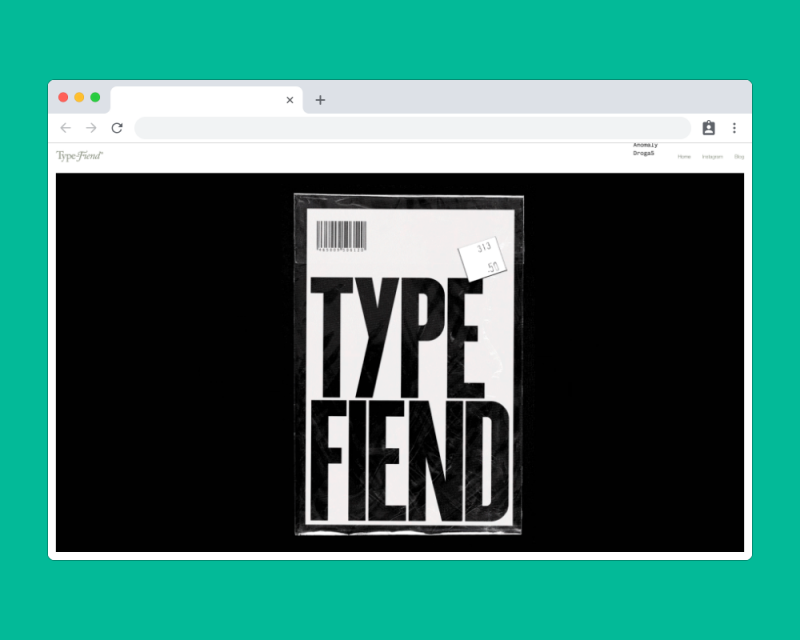
25. Beci Orpin
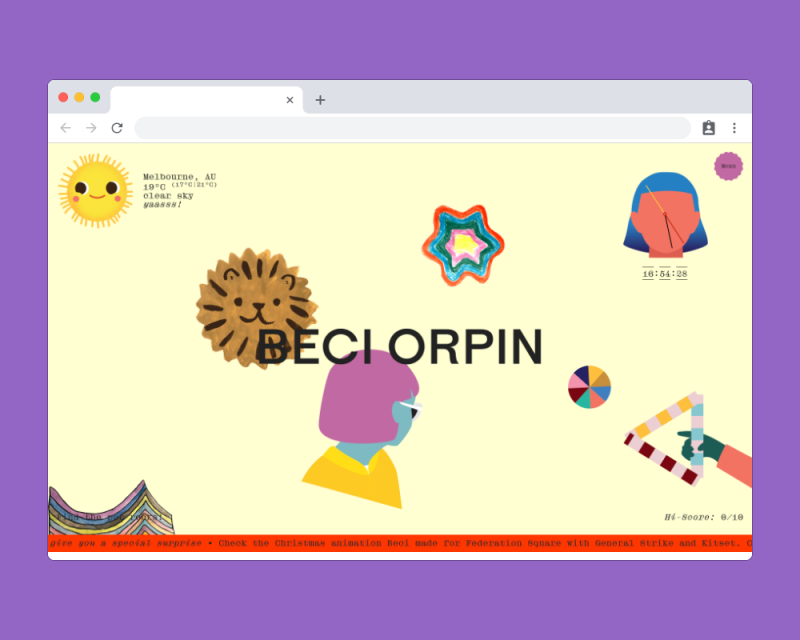
26. Xavier Cussó

27. Leslie David
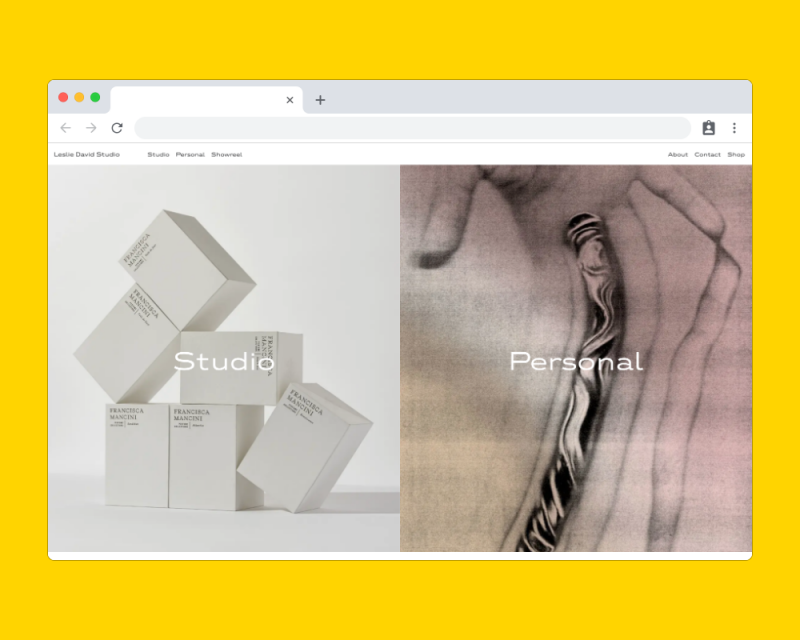
29. Wade & Leta

30. Marleigh Culver
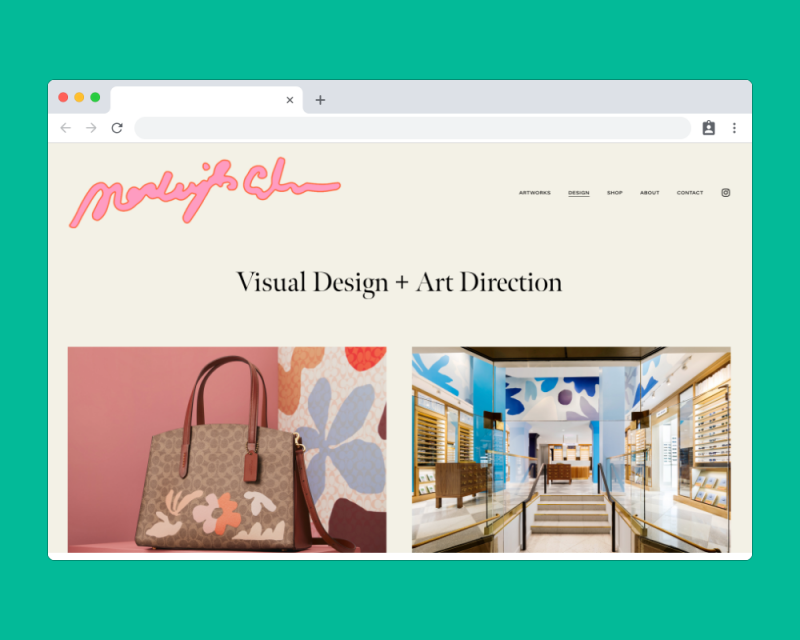
31. Yul Moreau
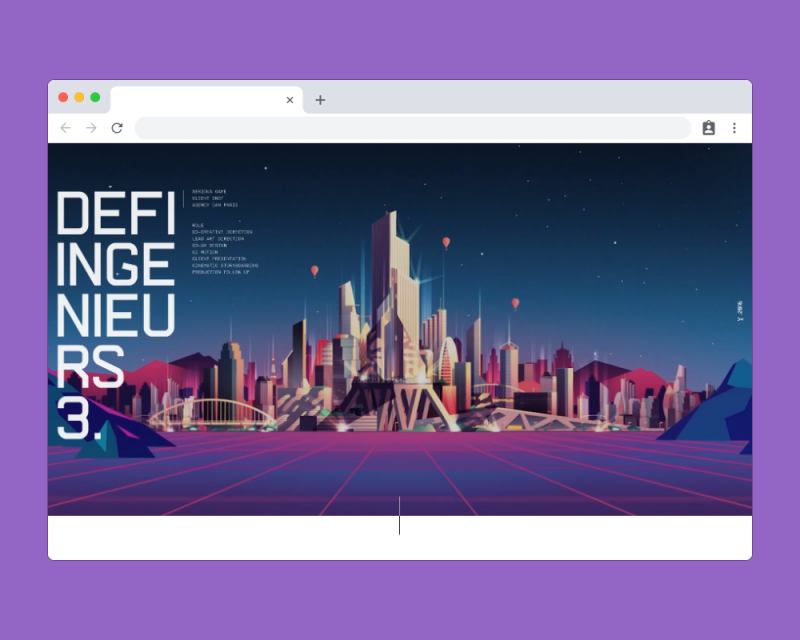
32. Brianne Coglon
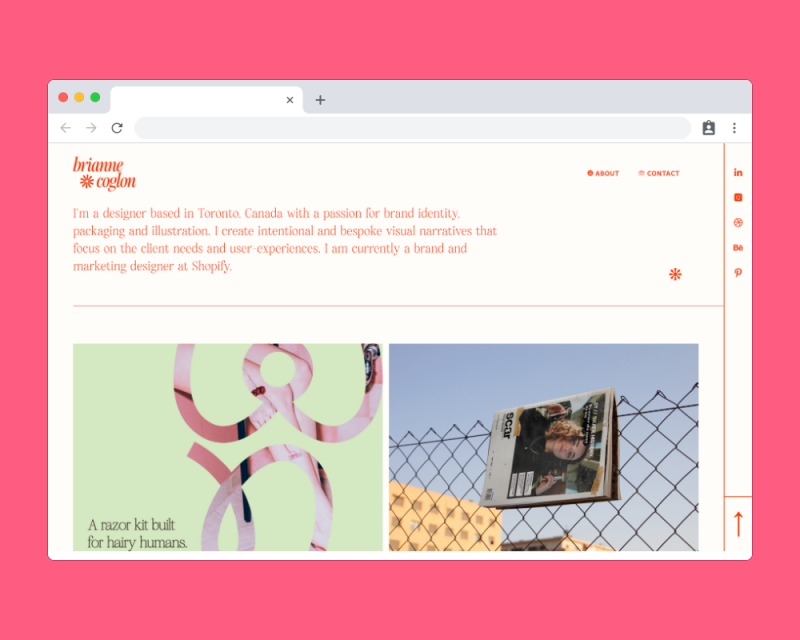
33. Koto Studio
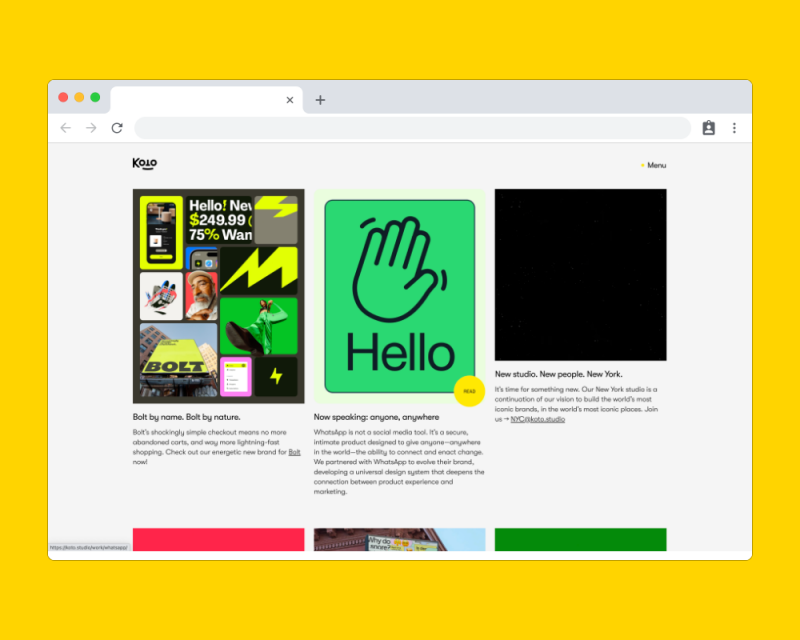
34. Indre Klimaite
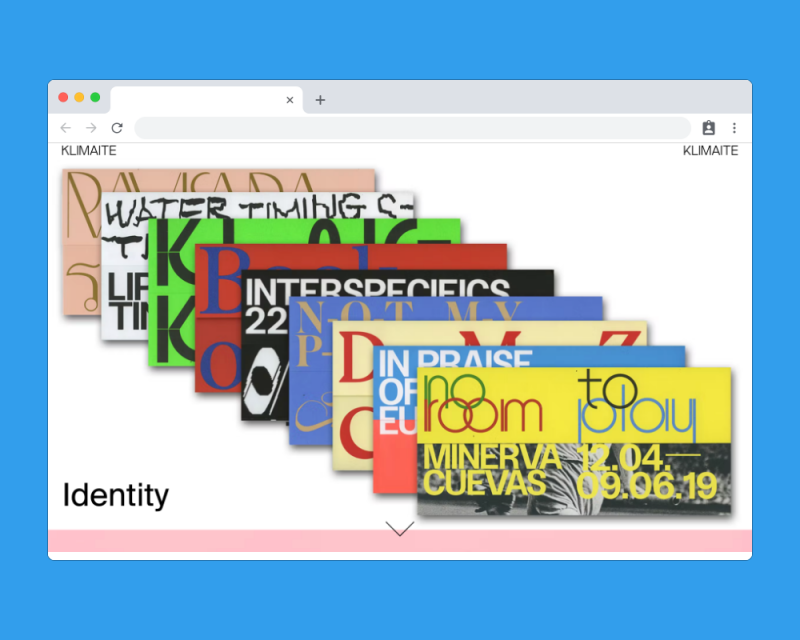
35. Sylvan Hillebrand
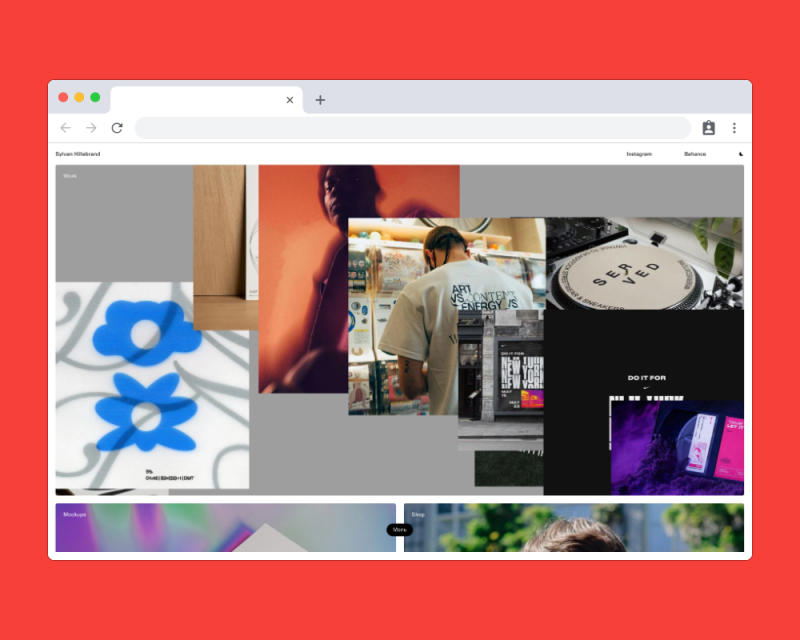
Tips for putting together a great graphic design portfolio
Inspired by these amazing graphic design portfolio examples, and ready to start improving your current portfolio? Well, follow these expert graphic design portfolio tips, and you shouldn’t go far wrong…
1. Let go of lesser work
When you’ve put a lot of time, effort and emotional energy into a particular project, you naturally want to show it off to people and include it in your graphic design portfolio. But if you want your portfolio to be the best it can be, it needs to be ruthlessly edited. And that means being tough with yourself about only including the very best work.
There’s no hard and fast rule about how many pieces to include, but remember that you can’t predict what people will dive into, and so your reputation is only as good as your last good piece. More reason, then, to ditch the weaker pieces, and only include the work you can be truly proud of. Since you have a short amount of time to grab the art director’s attention, ideally, you should include 10-12 top quality pieces that highlight your best work to make the most impact.
As Shanti Sparrow , head of teaching at Shillington New York points out:
You are only as good as your worst project, so you must learn to edit and let go. By including projects of varying quality, an employer may think you are inconsistent. Ask a peer or mentor to honestly critique your work and either ‘improve or remove’ the problem areas.
2. Include the kind of work you want more of
There’s a qualification to the idea that you should only include your best work. Even if a particular project is brilliantly worthy, it’s still worth considering leaving it out if it’s the kind of work you want to move away from in the future.
Clare Terry, director of Shillington Australia, puts it bluntly. “Like attracts like, so ask yourself: does your folio reflect the work you’d like to attract? If not, add more of those clients and projects in.”
For example, if you’ve done a lot of digital design projects, but you want your next job or freelance gig to be focused on print design, then you need to tailor your design profile accordingly. People are not mind-readers, and you have to tailor your brand visually, just as you would a brand you were working for.
As Jimmy Muldoon , teacher at Shillington New York, points out:
Does your portfolio reflect who you are today? As people and designers, we’re constantly evolving. Make sure your portfolio authentically represents who you are now.
It’s one of those annoying pieces of advice that’s easy to dish out, much more difficult to do. But in reality, numerous employees have told us they want to see “some of your personality” come through in your portfolio.
Don’t go over the top with this: it’s the kind of thing that can backfire if done casually or thoughtlessly. But it’s worth considering if there’s any way you can show a little of who you are through your portfolio, whether that’s through the work you curate, your personal branding, the way you present it, the copy you write, or any other method.
4. It doesn’t have to just be client work
When you’re still a student on a graphic design course , it can be tricky to find enough work to fill a portfolio, and tutors will usually advise you to generate other design work outside of normal client relationships, including side projects, pro bono work and competition entries.
And in principle that doesn’t stop when you finish your course, either. Later in your career, even when you’ve had years of experience in a design studio, you may still find these approaches useful in making your portfolio better. Especially when it comes to highlighting the kind of work you want to do in future, which your current employer may be preventing you from doing.
5. Focus on the process, not just the finished work
The biggest mistake many graphic designers make with their portfolios is only showing the finished work. That’s frustrating for many potential clients and employers, who typically want to know things like who else was working on the project, what your contribution was, what the brief was, what the challenges were in fulfilling it, and how you went about overcoming them.
Very little of what can be seen in one glossy final image, so make sure there’s extra content that shows the process you went through to get there, including sketches, screenshots and other works-in-progress where appropriate.
Designer and illustrator Jane Bowyer stresses that not every project you include needs to have been a success from start to finish:
Don’t be afraid to discuss where things went wrong with a piece of work, but consider talking about what you learned from the experience, rather than focusing on the negative.
6. Think about formats
Nowadays, a portfolio typically appears in the form of a web page or series of web pages. But there may be times when that isn’t the best solution.
For example, you might be having an interview or meeting in a place with no Wi-Fi and where mobile internet is choppy or non-existent. So it’s always good if you can put together a PDF portfolio that you can store on your laptop or tablet, and put on a USB stick in case the other party wants to have a look through too.
It’s also useful to have a presence on an online creative platform like Dribbble or Behance —but don’t spread yourself too thin; only commit to one of these if you can devote enough time to do one well. An outdated profile is only going to worsen your chances of consideration.
Employers will also be expecting you to have some kind of social media presence, too. Again, focus on one or two platforms you can consistently maintain, rather than trying to populate all of them. But it’s important to have a design-specific account that’s separate from your friends and family images.
7. Check your spelling
While a graphic design portfolio is primarily about visuals, don’t think that words aren’t important. When people spot a spelling mistake in your work, it’s usually taken as a sign of sloppiness, laziness or a don’t care attitude.
That might seem unfair: after all, everyone lets a typo slip once in a while; if they claim they don’t, they’re simply lying. But harsh judgements like that are simply the world we live in, so it’s vital that you double- and triple-check every word you write, and then get others to do so too (as they will inevitably spot something you’ve missed).
8. Ask for critiques
Of course, spelling mistakes aren’t the only reason to show other people your portfolio. One of the most straightforward and reliable ways to improve a graphic design portfolio overall is to get it critiqued by others, whether that’s a colleague, your creative director, a tutor or even just a friend in a related profession, such as the media.
Not everyone does this because quite frankly no one likes to be told that the thing they’ve poured their heart and soul into isn’t perfect. But isn’t it better to be told that by someone who doesn’t have a big influence over your future, and rather than finding out when it’s far too late?
9. Practice talking through your portfolio
However awesome your portfolio is, if you just walk into an interviewer’s office, show it to them, and sit back waiting to be praised, you’ll probably be waiting a long time. In reality, you must walk them through it, step by step, explaining what they should be looking at and why it’s relevant.
Again, this is something that’s best practised beforehand, so you don’t stumble over your words or get lost halfway through. We’ve all done that at one stage or another, so the maxim ‘practice makes perfect’ really does apply here.
10. Put in the hours
If all this sounds like a lot of work, then you’re correct: if you’re doing everything right, it will be. But equally, you will get back the time you’ve spent tenfold in terms of the career and freelancing opportunities that a killer portfolio opens up.
It’s natural to feel occasionally feel aggrieved about the hours you’re putting in. After all, why can’t they just take your word for it that you can do the job, or complete the freelance project? Whenever you feel like this, though, think about how they see it. They’re considering investing their hard-earned money in you, and they don’t want it to go to waste.
11. Get Help from an Expert
An absolute key step in creating your own graphic design portfolio is getting help from someone who knows—and excels—at what they’re doing. An expert, in this case a practicing graphic designer, will be able to show you what you’re doing well and what you can improve in your portfolio. Being a graphic designer, they can show you exactly what a graphic designer wants to see.
The best way to get expert help on creating your own portfolio is Shillington’s graphic design course . In our innovative graphic design bootcamp, expert practicing graphic designers guide you everything you need to know to work as a graphic design before graduating fast—just three months full-time or nine months part-time—with a complete graphic design portfolio ready to apply for jobs in the industry. In fact, some of the portfolios you have just seen were created by Shillington graduates .
Amazed by these portfolios and would love to create one of your own? Study graphic design or upskill at Shillington with our online graphic design course . Follow this guide on how you can learn how to become a graphic designer , even if you’re a total beginner.
Laura Carrick February 16, 2023
Posts you might like

One of the best things about graphic design is that it never stands still for a moment. But that does mean that keeping up with...

The best graphic design books can take you on an exciting journey of the imagination, transport you to new creative worlds or...
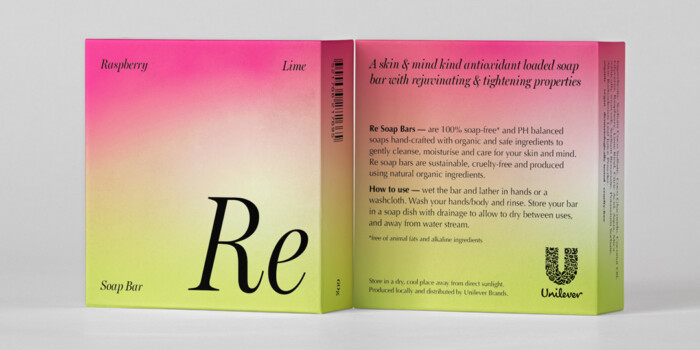
At Shillington, our dedicated graphic design students are taught all about how to design for packaging—from FMCG (that’s fast...
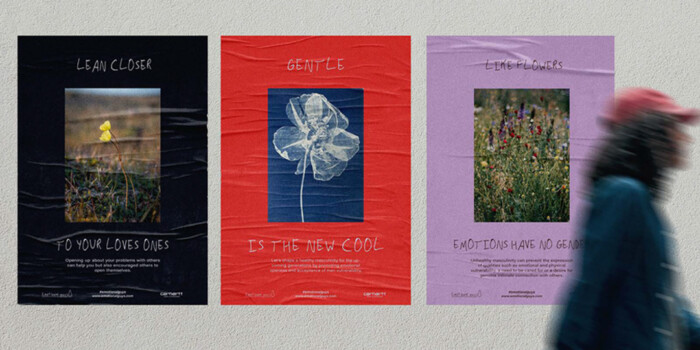
At Shillington, our graphic design course teaches students how to design campaigns for a brand, helping to spread its message....
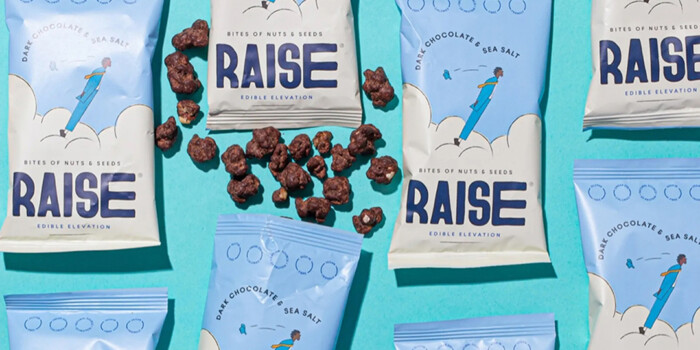
Exposing yourself to examples of good graphic design is a healthy practice no matter who you are. Maybe you’re a student...
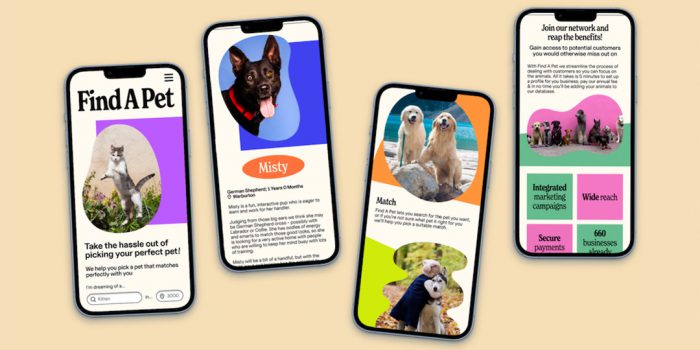
At Shillington, our graphic design bootcamp students are taught how to design for digital, incorporating aspects of both UI and...
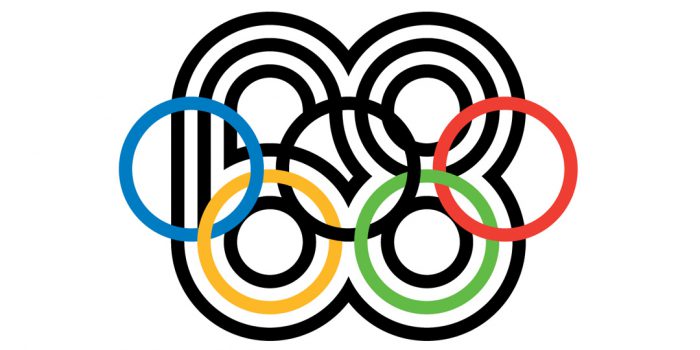
We love graphic design. And we're guessing, as you're here, you love graphic design too. This means that we all love graphic...

Graphic design is an ever expanding creative discipline. With our graphic design course, we teach you how to make research a...
Want to win some amazing prizes and stay in the loop with all things Shillington? Sign up to our newsletter to automatically go in the draw.
- How did you hear about us? * Please select Art & Design Resource Guide ArtsHub Collective Magazine Computer Arts (Magazine) Email Facebook Fashion Journal Finders Keepers Frankie Google Search I'm a Shillington Graduate Instagram LinkedIn London Tube Monster Children Other Outdoor Advertising Pedestrian Peppermint Magazine Pinterest Public Transport Shillington Design Blog The Design Kids (TDK) The Loop Twitter Word Of Mouth
- Yes, I want to hear Shillington news, get free resources and be invited to special events.
Kickstart your creative career at Shillington.
Our Contributors
Design leaders teach with Sharpen
Sharpen generates open-ended project prompts that reinforce critical problem solving, curiosity, and creativity across 21 different categories and 2 unique generators.
Sharpen is trusted by teams and designers worldwide:

Design challenge exercises are among the most informative data points when assessing someone’s individual design capabilities as part of the hiring evaluation process. Sharpen is a simple, elegant way to create these types of design challenges that are fairly considered for the candidate.
Mike Buzzard — Design Manager III, UX Community & Culture @ Google
Custom generators for hiring & more
Use a custom Sharpen design prompt generator in your hiring process, and make hiring designers easier, more ethical, and more efficient.
Get custom branding, specific prompt types, and more!

Refining your craft isn’t about reading more articles — it’s about getting more reps in. When designers ask me how to practice outside of work, Sharpen.design is the first place I send them.
Ben Huggins — Head of Design @ Humu
Quality resources for educators
Inspire your students with challenging NGSS-aligned packs of lessons and projects from Sharpen. Get instructor and student guides, plus flexible assets to easily integrate into your classroom.
Trusted by STEM educators and top companies around the world.
Keep your skills sharp
Our spam-free newsletter is just what the design director ordered.
10 Excellent Free Online Graphic Design Courses
Learn graphic design with these 10 free online graphic design courses. Build your skills and jumpstart your graphic design career.

Renee Fleck
Written by Renee Fleck
Published on Jan 05, 2022
Last updated Mar 11, 2024
Ready to launch your career in graphic design? The good news is that in 2023, you don’t have to spend an arm and a leg in tuition fees or dedicate years at design school to learn design or become a professional graphic designer.
Learning graphic design doesn’t have to be expensive, and you can certainly do it on your own time thanks to a few high-quality, free online courses. In this article, we’re sharing the best free online graphic design courses to jumpstart your career the self-taught way.
1. CalArts Graphic Design Specialization
The California Institute of the Arts offers an extensive graphic design specialization program for free through Coursera. These five beginner-level courses are each led by a faculty member at CalArts and are packed with insights from industry professionals.
Through this graphic design specialization, you’ll learn the fundamental skills needed to begin a career as a professional designer, how to master visual communication and gain a solid understanding of how graphic design plays into other areas like interface design, motion graphics, and editorial design. Here’s a quick rundown of each course:
- Course 1: Fundamentals of Graphic Design
- Course 2: Introduction to Typography
- Course 3: Introduction to Imagemaking
- Course 4: Ideas from the history of Graphic Design
- Course 5: Brand New Brand
To get free access to the course material, simply choose to audit the class via Coursera.com .
2. Canva Design School: Graphic Design Basics
Get a solid foundation of graphic design in this quick, jam-packed course offered by the folks Canva. Canva’s Graphic Design Basics class is comprised of twelve bite-sized lessons, each covering a foundational element of graphic design along with an activity that puts your new knowledge into practice.
You’ll get a taste of invaluable design know-how from defining your intended message, crafting moodboards, color wheel and typography essentials, and plenty more. This course is perfect if you don’t have a lot of time to invest in learning a new skill, or just want to dip your toes in the water to get a better understanding of how to think as graphic designers do.
3. Logo Design Fundamentals
Branding is one of the most fundamental aspects of graphic design, and a specialty many designers choose to focus on. If you want to dive deep into the world of brand identity design, Udemy’s Logo Design Fundamentals is a great place to start.
In this course comprised of fifteen lectures, learn what makes for a successful logo design, understand your client’s needs, and build out a brand identity system that can effectively be used across many types of different applications. In this branding crash course, you’ll learn everything you need to know to be able to craft a successful logo design from start to finish.

4. Introduction to Graphic Design History
What better place to start your graphic design learning journey than where it all began? In Kadenze’s Introduction to Graphic Design History , learn all about how design has touched nearly everything in our lives—from our society, our politics, to our ideologies.
This history of Graphic Design crash course was adapted from the same class taught at the Maryland Institute College of Art. Dive deep into design history and gain a deeper understanding of the role Graphic Design plays in our world, its evolving styles, and revolutionary techniques.
You’ll come away equipped with a solid understanding of what defines successful graphic design and view the profession through a whole new lens.
5. Adobe Illustrator for Beginners
Learning the principles of graphic design should be the foundation of your education. But what use is it if you can’t put these principles into practice? To actually produce and create great design work, you also need a few hard skills under your belt—for example, knowledge of certain design softwares.
Adobe Illustrator is many designers’ software of choice, and in this three-hour Adobe Illustrator crash course presented by Envato Tuts, instructor Dan Scott explains everything you need to know about the program to start bringing your ideas to life.
Learn the basics of designing custom shapes, lines, and brushes, and also learn how to use and manipulate text, and work through creating custom logomarks and icons. You’ll also learn sneaky secrets for creating beautiful color palettes, gradients, and patterns. Plus, the video will take you through essentials like saving and exporting your work for both print and web. There’s plenty of exercises throughout the course so you can apply what you’ve learned right away.
Bonus: Take your graphic design expertise to the next level and add Adobe Photoshop to your list of tools through this free Envato Tuts class .

6. Graphic Design Basics: Core Principles for Visual Design
Skillshare also offers a completely free class that covers the five basic principles of Graphic Design in only 35 minutes. This course is for anyone who wants to explore and experiment with images and text to communicate a message. Learn ideas and principles that can be applied to any visual layout from a book, magazine spread, web page, poster, etc.
The class is taught by directors of the Graphic Design MFA program at Maryland Institute College of Art, so you’ll see plenty of examples of graphic design projects created by students at MICA. Get ready for a helpful crash-course in core design elements like symmetry, scale, framing, hierarchy, grids, and at the end of it all, put your new learnings to the test by creating a basic page layout in the design software of your choice.
7. Live Graphic Design Courses: Creative Live
Creative Live is a fantastic resource to learn Graphic Design from industry experts from all over the world. However, if you want to access these courses for free, you’ll have to do some planning ahead (free courses are conducted in real-time!). Simply scroll down to the Free and upcoming classes section to enroll in a live course of your interest and mark your calendar.
Each course is tailored to a specific aspect of design from portfolio building, how to think like a designer, to more niche areas of the industry such as book cover design, drawing basics, and plenty more.
8. Applying Design Principles
Whether you’re completely new to graphic design or simply want to brush up on your existing skills, this extremely useful course taught through Alison will equip you with the tools you need to start putting basic graphic design principles and design theory into practice.
Studying some of the most successful designs in recent history, you’ll not only master fundamentals like composition, balance, contrast, and hierarchy, but you’ll also learn how to apply these to both print and digital projects—whether you’re working on editorial assets, web design, social media graphics, and everything in between.
The class is completely free, but if you want to earn a certificate to feature on your resume or design portfolio, you’ll need to purchase a subscription to Alison.

9. Creating Brand Systems: An Overview of Combining Logos and Type.
In this twenty-minute free Skillshare course , the creative team at True Hand takes you through their step-by-step approach for navigating a client brand identity project. You’ll learn all about how to define a brand narrative for a client while diving into the design process and learning how to generate custom assets like illustrations and typography.
Rather than focusing on creating one logo, you’ll learn about the importance of creating a family of assets that can be used across a variety of applications—from business cards, signage, apparel, and more. This modern approach to building an all-encompassing brand identity system will also teach you how to effectively collaborate with clients and really give you a taste of what a successful branding process should look like.
10. Adobe’s Discover Graphic Design
Last but not least, if you’re looking to simply dip your toes into the world of Graphic Design, Adobe’s Discover Graphic Design resources are the perfect primer before diving into higher-level concepts.
While this isn’t a full-fledged course, the blog posts Adobe shares are great for exploring different areas of graphic design to see what really jives with you. From picking between serif and sans-serif fonts, gathering visual inspiration, or covering essential info like what a vector file is, there are plenty of insights to be learned here!

Learn graphic design for free online
Thanks to the internet, you can become a graphic designer at your own leisure and at no cost at all. Take advantage of all of these useful design classes, resources, and tutorials to start your learning journey today. And remember, just like any other field, learning design will take some time, effort, and a lot of self-discipline. Not sure if graphic design is for you?
Interested in learning UI Design? Check out our list of the best Figma courses to get started in digital design.
It's free to stay up to date
Ready for some inspiration in your inbox?
- For designers
- Hire talent
- Inspiration
- Advertising
- © 2024 Dribbble
- Freelancers

Graphic Design Education & Career Paths: A Comprehensive Guide
Graphic Design Education & Career Paths: A Comprehensive Guide
Do you think visually with an eye for beauty? Do you adjust designs constantly for a more pleasing aesthetic? If so, graphic design may be the path for you!
Graphic designers are responsible for all that pretty stuff we see every day. They make logos and websites and design product packaging and marketing materials. With their creativity and technical skills, they get ideas across.
The demand for skilled graphic designers today is off the charts! In this super visual world we live in, companies need them to be successful. You must create visuals that grab attention, show what the company stands for, and ultimately help them earn money.
So, what does it take to become one of these visual wizards? How do I start in this field? Don't worry! This guide will provide information on graphic design education and career paths. All you've got to do is buckle up and stay creative!
Table of Contents
Understanding Graphic Design Education

With graphic design education, there are two options: formal education or self-study. Both have their pros and cons.
Formal Education: Structured Learning and Credentials
Formal education in graphic design consists of a degree program at a college, university, or specialised school. Here is more about this path:
- Structured curriculum with hands-on training
- Access to industry-standard tools and software
- Learning from experienced professionals
- More expensive tuition with possible student debt
- Rigid schedules and coursework that may not suit everyone's learning style
- Limited flexibility for those working or have family responsibilities
Self-Study: Flexibility and Affordability
If you like being in control of your own learning experience and on a budget, self-study might be for you:
- Learn at your own pace, whenever you want
- More affordable than formal education, with free online resources and tutorials available
- Focus on what you specifically want to learn without the unnecessary coursework
- Lack of structured guidance and instructor feedback
- Limited access to industry-standard tools (unless purchased separately)
- No formal degree or credential, which may be expected in specific job markets
There’s no correct answer when deciding between these two methods. Most people choose both by starting with self-study and then pursuing a degree later.
Choosing the Right Graphic Design Program
If you opt for formal education, make sure it aligns with your interests and goals by considering these factors:
Program Type & Specialisations:
- Associate's Degree (2 years)
- Bachelor's Degree (4 years)
- Master's Degree (1-2 years after bachelor's)
Curriculum & Course Offerings:
- What topics do they cover?
- Focus on courses that cater towards your chosen speciality.
- Is there any hands-on training?
- Internship opportunities?
- Software provided?
By carefully considering these steps, you’ll increase your chances of finding the perfect program.
Faculty and Networking Opportunities
You will want to navigate towards a top-tier faculty crew and programs that offer networking opportunities. The benefits of these two aspects can be endless, as they create invaluable connections and relationships that’ll help you get your foot in the door.
These programs should have active professionals as instructors, internships, guest lectures, industry events, and student organisations. All of these will aid you in building a network with possible future colleagues.
Accreditation and Rankings
For your degree or certification to make an impact on employers, it has to come from an accredited program. This ensures that you’ve met specific quality standards in college.
Reputable rankings such as those found on U.S. News & World Report or Design Intelligence can give you an insight into the program's reputation, providing you with the necessary knowledge before making a decision.
Developing a Well-Rounded Skill Set
- Technical skills will take you far in this field, but other skills will boost your value when it comes time to find a job.
- Thinking outside the box is one key aspect of becoming successful in graphic design. Being able to solve problems creatively is crucial within this field.
- Visual communication involves understanding how colour choice , typography selection/arrangement, layout creation, etc., evoke specific emotions/responses from viewers.
- Mastering Adobe Creative Cloud ( Photoshop , Illustrator , InDesign ), Sketch, and Figma will help you separate yourself from other designers who may not possess those same skills yet.
- Typography principles/layout techniques are essential aspects of creating visually appealing & effective designs.
- Consistent branding across media is valuable in this field, while user experience design principles/researching techniques are becoming increasingly popular.
- Working with others can sometimes be challenging but essential for success within this field, as graphic designers often work closely with clients, colleagues, and other stakeholders.
- Meeting tight deadlines and managing multiple projects simultaneously are also common challenges in this field. Strong time management and organisational skills are crucial to combat these issues.
With continuous development/ refinement of these skills, you will stand out from the rest of the job market when it comes time to apply.
Exploring Graphic Design Career Paths

Once you've finished your graphic design education, it's time to explore the many career paths in the field. Here are some old-school roles and job titles:
Graphic Designer
Make visual designs for print, digital, and multimedia. Work with clients or internal teams to understand requirements, develop concepts and mock-ups, and finalise designs for production.
Web Designer
Specialise in visually appealing and user-friendly websites and web applications. Design layouts, graphics, and user interfaces (UI) ensure optimal user experience (UX) across devices and browsers.
User Experience (UX) Designer
Focus on understanding user behaviour , needs, and pain points to create intuitive digital experiences. Research users, create personas & journey maps, develop wireframes & prototypes, and collaborate with developers and designers to implement designs.
Multimedia Designer
Combine forms of media like text, graphics, animation, audio, and video to create engaging interactive experiences. Work on presentations, educational materials, video games, and multimedia installations.
Art Director
Oversee visual style of projects; manage teams of designers & artists. Collaborate with clients, copywriters, and stakeholders to develop creative concepts, ensure brand consistency , and provide innovative leadership.
Production Artist
Prepare designs for print or digital production by handling tasks such as file preparation, colour correction, and image retouching, ensuring they meet specific requirements.
New Roles & Specialisations
As the industry changes, new roles emerge to meet demands from businesses & consumers. Some exciting career paths that are gaining traction:
UI/UX Designer
Designs must be seamless, intuitive, and visually appealing, so focusing on these things and usability across various platforms and devices is the main goal here.
Motion Designer
Create animations, logos, explainer videos , and other content that is mainly motion-based. Make sure this stuff looks good, too!
Environmental Designer
Environmental designers are responsible for creating immersive and engaging physical spaces like retail stores , trade show booths, and exhibition spaces. They work closely with architects, interior designers, and other professionals to design visually compelling and functional environments that match a brand's identity .
Game Designer
The continuing growth of the gaming industry has created a high demand for game designers. These creative professionals are responsible for designing the visual elements of video games, including characters, environments, user interfaces, and aesthetics, and ensuring an enjoyable experience.
These specialisations highlight the versatility and ever-changing nature of graphic design. As new technologies emerge and consumer demands change, graphic designers have plenty of room to adapt their skills in new ways.
Building Your Portfolio and Personal Brand
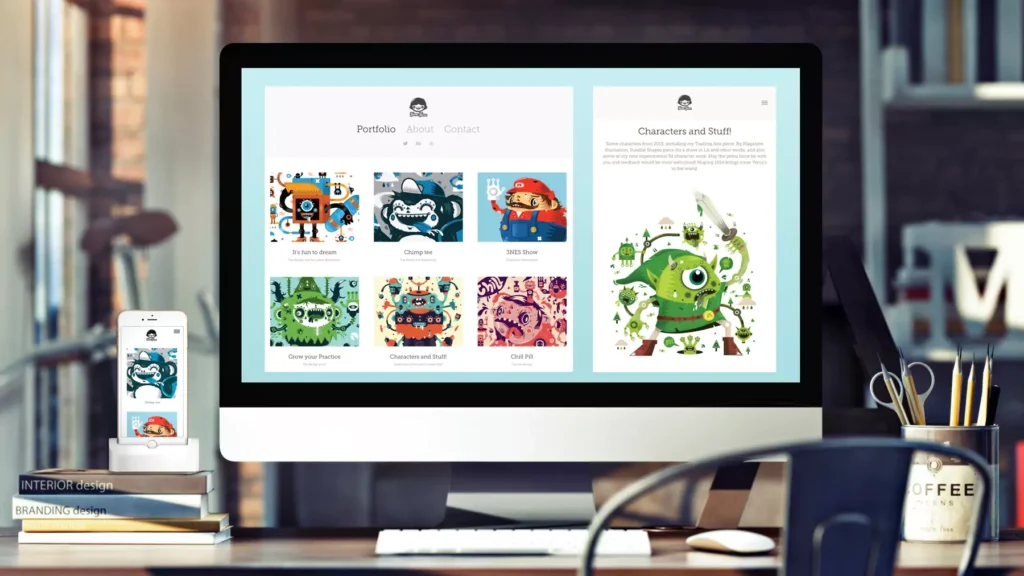
To succeed in the graphic design industry, you’ll need a strong portfolio and personal brand, regardless of your chosen career path. Here are some tips for making both stand out:
Portfolio Tips
- Your portfolio should feature projects that showcase your creativity, technical skills, and problem-solving abilities.
- Write detailed descriptions about each project, including design process challenges faced along the way and outcomes achieved.
- Organise your portfolio visually so it’s easy for employers or clients to go through your work.
- Tailor your portfolio specifically to target roles or industries by highlighting relevant experience.
- Create an online portfolio or personal website to easily share examples of your work on different mediums.
- Always keep adding new pieces of work as you complete more projects. This will show employers how much you’ve grown since starting your career in graphic design .
Personal Branding Tips
- Create a consistent visual identity that represents who you are as a designer through logos, colour palettes, fonts , etc.
- Establish an online professional presence using platforms like LinkedIn Behance or Dribbble. Be active in the communities there, too!
- Go to industry events, meetups, conferences, etc. Occasionally, getting out from behind the desk and having face-to-face conversations with people in your industry will be beneficial.
- Write or contribute to design blogs to establish your reputation as an expert in the industry.
- Leverage social media platforms like Instagram, X, or TikTok to share your work insights into your process and gain a following.
- Look for opportunities where you can speak at events or host workshops. Sharing what you know will help build credibility among others!
- Building a portfolio and personal brand increases your chances of landing jobs and winning clients and helps establish yourself as a professional in the industry that demands respect.

Continuing Professional Development
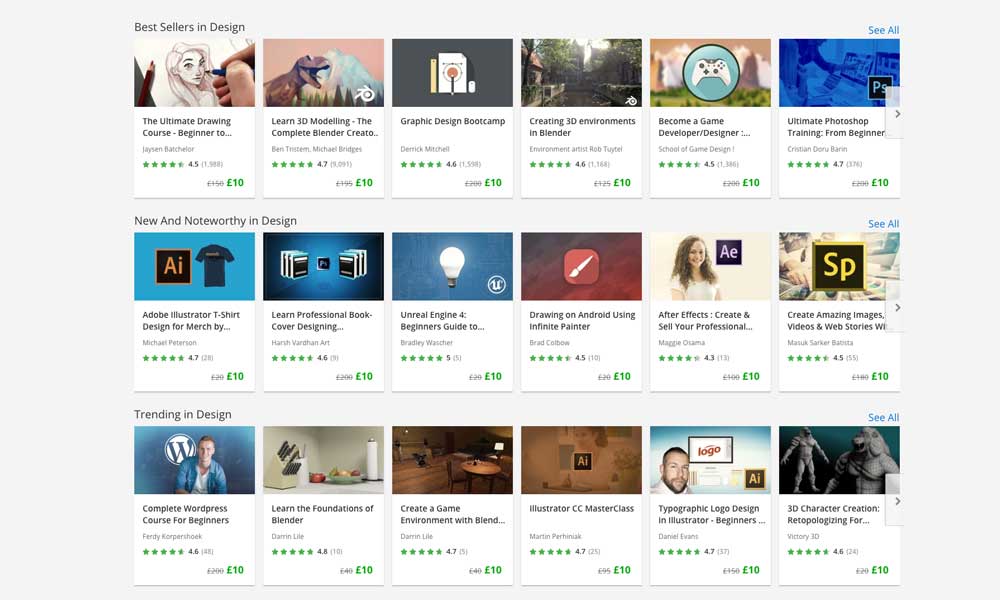
Just because you’ve landed a job doesn’t mean you should stop learning. The graphic design world is fast-paced, making continuous learning and development essential to stay ahead of the competition. Here are some ways to keep up:
Attend Workshops and Conferences
Workshops, seminars, conferences, etc., provide excellent opportunities to learn new techniques from experts, discover tools, and learn about trends and challenges in the field. Actively seek out these learning opportunities so you can grow.
Enrol in Online Courses and Tutorials
It’s an exceptional time for learning. With abundant online resources, we all have the tools to succeed. Just look at platforms like Udemy , Skillshare , or Lynda.com. So many courses and tutorials are available that it’s hard not to find what you’re looking for.
Get involved
Engaging in professional organisations and communities helps you stay connected to the things that matter most. It can connect you with people on similar paths, give you access to resources and networking opportunities, and keep you updated on news and events throughout your industry.
Share your knowledge
Collaboration can be an influential teacher. Seek out opportunities to work with other designers or mentor those who are just getting started. Teaching others what you know can strengthen your understanding of a subject.
Stay curious
The world is a whole of cool stuff. Explore museums, galleries, and nature to get inspired in unconventional ways. View life through different lenses and challenge yourself to think outside the box so that new ideas come naturally.
Continuing education is key in any field, not just graphic design. The world is constantly changing, so we all need to adapt if we want success.
The landscape of graphic design is bursting with possibilities and options. Each career path presents an exceptional opportunity for unique and exciting work. Be it formal education or a self-lead study journey— creating a skill set, building your portfolio, and ensuring you have a personal brand will be vital for success.
Never stop being inquisitive and learning new things. Constantly challenge yourself to create better and better work that profoundly impacts the people consuming it, visually stunning them in the process. The opportunities are endless; all you need is passion and dedication to create a rewarding career in this field of evolution.
What kind of software do I need?
Most graphic designers commonly use Adobe Creative Cloud (Photoshop, Illustrator, InDesign), Sketch and Figma, which are industry-standard tools used to create visuals.
Do I require a degree?
While it's true that having one can boost your job prospects, it’s not strictly necessary. Many successful designers entered the field through self-study online courses or alternative educational paths.
How much money can I expect to make?
Pay scales can vary greatly depending on location, experience level, industry in which you find work or your job role. On average, though, according to PayScale — A US-based designer makes about $50k annually. Entry-level folks might make around $40k, while professionals bring home upwards of $65k.
Where would I find work as a designer?
Lots of places! Advertising companies, marketing agencies, publishing firms, design studios, tech companies, education services, non-profits, etc. You could also start your studio or freelance!
Is specialising essential for me too?
Specialisation is advantageous because being an expert at something means you’re more valuable than someone who can only scratch the surface of everything. However, it’s good to know how to do many things so you can adapt when new technology changes what we consider “good design.”
What soft skills should I focus on developing?
Being a good communicator and collaborator, as well as managing your time efficiently, are all important. These soft skills will be helpful when working with clients, colleagues, or stakeholders.
How can I keep up with industry trends?
You can do so by attending workshops & conferences, enrolling in courses and tutorials online, joining professional organisations or communities or even just seeking inspiration from diverse sources. The key is constantly learning and adapting in an industry that moves quickly.
Stuart Crawford
Need help building your brand.
Let’s talk about your logo, branding or web development project today! Get in touch for a free quote.
Leave a Comment Cancel reply
Trusted by businesses worldwide to create impactful and memorable brands.
At Inkbot Design, we understand the importance of brand identity in today's competitive marketplace. With our team of experienced designers and marketing professionals, we are dedicated to creating custom solutions that elevate your brand and leave a lasting impression on your target audience.
Human-generated content, empowered by AI.
FREE eBook: Establish Authorship & Build Authority Online
66 Graphic Design Ideas To Spark Your Creativity
December 23, 2021 (Updated: June 12, 2024)

Marketers have a unique role, where they get to be both creative and analytical on the job. The creative side is fun until you come across a project that causes a creative block. Having tactics to break through the brain fog and develop new ideas is a helpful resource for your marketing toolbox. Today, we’re looking at different design movements and art techniques to give you new graphic design ideas with topics like:
23 Design Movements for Graphic Design Ideas
43 art techniques for graphic design ideas.
If you love this post and find it useful, get even more creative ideas to enhance your graphic designs with aesthetics and design tools.
An artistic movement is a design style with distinct characteristics, followed by a group of artists during a specific time period. Many art movements also share a common goal or philosophy to influence how viewers see and experience the world. Designs from these eras and periods may help spark new ideas you can use in your marketing materials today. Here are some graphic design examples to help inspire your next graphic design project:
1. Abstract
The abstract art movement takes real-world objects but makes them look different from how they look in real life. For example, an abstract drawing of a tree may not show it growing upward, but side to side, or in pieces. Artists like Pablo Picasso popularized this style in the 19th century. The elements that make a design abstract vary by the designer and their view of the object, not as it is, but how it could be. Characteristics of this style include the use of ambiguous shapes, unexpected element placement, inversion, and unexpected color usage.
2. American Kitsch

Image via Wikipedia
American Kitsch became popular in the United States from the 1940s to the 1960s. Art déco, another artistic movement, served as its inspiration. Today, people associate this style with movie posters from the era, especially ones from the science fiction genre. Characteristics of American Kitsch include bold colors, cartoon-like illustrations, contrasting fonts and images, dramatic poses, and aerodynamic shapes.
3. Anti-Design
Anti-design is an artistic movement that had a philosophy to prove to its viewers: everything that was once revolutionary eventually becomes commonplace. Instead of accepting this philosophy, anti-design artists choose to go against commonly held standards. The movement rejects principles like usability, homogeneity, or anything considered “the norm” in society or design. The current wave of this movement focuses on characteristics such as clashing colors, illegible typography, crowding of elements, and the illogical use of white space.
4. Art Déco

Image via Amazon
During the 1920s and World War I era, art déco was a symbol of sophistication, wealth, and luxury. We often associate it with architecture and visual arts. In its heyday and modern revivals, this design movement is one of the most popular in marketing and advertising. Characteristics of the style include geometric shapes, vertical lines, capitalized type, high-contrast tones, bold colors, and flat depth.
5. Art Nouveau
Art nouveau was a popular architecture and decorative art design movement, but can also apply to graphic design. The style became popular in the late 19th and early 20th centuries in the United States and Western Europe. Characteristics of the style include bold outlines, illustrative style, the use of natural forms, and features of female-presenting subjects.
6. Arts and Crafts
Arts and crafts isn’t just a day camp activity name. This international art movement focused on craftsmanship and traditional imagery. It often features folk or medieval figures and type. The movement started in Britain and moved through Europe and North America from the late 1800s to the early 1900s. It reemerged in Japan in the 1920s. Characteristics include lots of texture, illustrated typography, simple fonts, and historical themes. Popular color schemes include neutrals, like browns and creams.
7. Bauhaus

Image via Creative Market
The primary goal of the Bauhaus movement is to bring function, design, innovation, and craftsmanship together in art design. The unusual name comes from its founding location, the Staatliches Bauhaus art school in Germany, where students popularized these designs in 1919. Characteristics include simplicity, grid organization, geometric shapes, contrasting colors, and visual hierarchy.
8. Brutalism
The Brutalism movement began in the 1950s and was most commonly used in architecture but also made the jump to digital design. This style has some similarities to minimalist design but its own hallmarks, including influences from industrial or building materials and design. Characteristics of the movement include monochromatic color, lack of ornamentation, modular designs, repeated patterns, lack of editing, and layered pieces.
9. Early Modern
Modernism is the idea of rebelling against anything traditional, like previous styles. Early modernism is the first phase of that movement. Designers used it for everything from art to architecture, and even furniture. Characteristics include geometric shapes, photos instead of illustrations, clean fonts, and minimalistic layouts.
10. Futurism
Futurism was an art and social movement that started in the early 20th century in Italy with parallel movements worldwide. Its focus was fitting for the time of the Industrial Revolution, with an emphasis on technology, speed, objects, and transportation. Characteristics include eclectic styles, neutral or muted colors, new technology, and offset text.
Like other art movements in this list, the grunge era also coincided with the popular music of its time. It originated from the 90s subculture movement of the American northwest, in areas like Seattle. The style embodies an urban feel combined with elements of the punk era, which came before it. Characteristics include dirty texture, crooked elements, stains, torn elements, and hand-written or hand-drawn pieces.
12. Hero Realism

Image via Medium by Faizan Bhatti
Hero Realism rose to prominence during the time of Socialist and Communist regimes in Europe and Asia. Designs featured a human figure that was the “hero” of the piece. The supplemental text acted as a call to action (CTA) and encouraged people to do something, such as sign up for a draft or buy a war bond. The Uncle Sam and Rosie the Riveter posters from WWI and WWII are popular American examples of this style. Characteristics include one focal human subject, realistic imagery, bold and clear fonts, and a poster style.
13. Late Modern
Late modernism was another phase of the modernist movement that came after World War II. It became popular in the contemporary art of the 1950s. This movement followed many of the same principles as early modernism, but with an anti-design twist. Characteristics include non-decorative typeface, distorted geometric shapes, and informal or unplanned structural layouts.
14. Maximalism
Maximalism aims to fill the empty space of a design. Artists use a variety of colors, shapes, and objects to meet that goal. It’s the opposite of the minimalist movement. To understand maximalism , think of a hidden-picture puzzle. Each time you look at the puzzle, you find a new object stashed throughout the entire design because it takes up all the available space on the page. In maximalism, the graphic designer has the freedom to decide just what elements to use to take up that space, as long as it fits the project’s theme.
15. Minimalist
The minimalist movement has been around for years, but it most recently became popular again in the 2010s for interior design. The name suggests exactly what sets this style apart from others: sparse use of elements. Another hallmark of minimalism is not using any more elements than necessary to make your point. Characteristics include neutral tones or secondary colors, the use of negative space, no field depth, and linear elements.
16. Post-Modern
Post-modernism is a stylistic phase that followed modernism. It became trendy in the 1970s and 1980s. You may recognize post-modern art for its lack of rules or structure, like anti-design, and its combination of elements from a variety of other distinct movements. Characteristics include collage illustrations, clashing colors, a tilted axis perspective, and overlapping elements.
17. Psychedelic

Image via Behance by Guro Jeppestol
The psychedelic movement influenced art and music associated with the 1960s and 1970s decades in the United States. Its origins came through inspiration from clothing, literature, philosophy, and the culture of the era, especially the hippie counterculture of the western part of the country, such as in California. Characteristics of the style include bold and clashing colors, images and type in art nouveau style, hand-drawn and illegible fonts, and curvaceous forms.

Image via 99designs
The punk movement originated in the 1970s in collaboration with the rise of the music scene by the same name. Many designers of the period didn’t train in art or design. These creators worked with bands and volunteered to help make their posters, flyers, and cover art. Most pieces have a do-it-yourself feel, like something anyone could create. Characteristics include collage style, photographic imagery, low-quality images, grainy effects, and rough texture.
19. Retro-Futurism

Image via Twitter by @ chemicalcuts
Retro-futurism may sound like a contradiction, but it’s actually a combination of other design movements. It takes inspiration from nostalgic and retro designs and how those eras viewed the future. Then it combines those principles with current trending subjects. For example, take any merchandise today that uses the Friends TV series font but not for products promoting the show. This is an example of Retro-Futurism because it combines the nostalgic feel of the font from the 90s TV show with trending subjects of today.
20. Social Consciousness
Socially conscious design has become more popular as the world focuses on social responsibility and topic issues like climate change and human rights. Key focus points within socially conscious design include:
- Authentic representation: This segment focuses on preventing misrepresentation of a person, group, or culture in designs. It also avoids using cultural or religious symbols or images in an insensitive or defamatory way.
- Diversity: The segment helps represent all segments of a target audience or geographic location in a design, not just one group or subsection.
- Sustainability: This segment focuses on how graphic design ideas reflect a company’s or client’s views on environmental issues and helping the planet.
21. Steampunk
The steampunk movement became a subculture trend in the 1980s. It used inspiration from the 19th century, such as the Victorian era or the Industrial Revolution, to inspire its fashion, design, and overall aesthetic. Characteristics include vintage inspiration; neutral brown, gold, and black colors; and industrial objects, such as gears or gaslights.
22. Swiss International
The Swiss International movement earned its name from its origins in Switzerland in the 1940s. It’s mostly used for poster design because it combines typography, photographic images, and grids. Characteristics include simple design, matte color palettes, asymmetrical layouts, sans serif fonts, and the use of negative space.
23. Victorian
The Victorian movement references the period of Queen Victoria’s reign in Britain from 1837 to 1901. This period extended longer in the United States. We commonly associate the style with architectural homes of the era, but it also influences clothing and both interior and graphic design. Typical elements of Victorian style include elaborate decorative borders and fonts, symmetry, ornate imagery, banners, and minimal straight lines or edges.
Artistic techniques are the procedures or processes used to make designs. Most techniques get their distinctions from the ways they use the seven basic elements of design: line, color, shape, value, texture, space, and form. Combining multiple styles into one design helps create unique logos or projects that could help your brand stand out from the competition. Consider these art techniques and principles when searching for graphic design inspiration:
With all the computer programs available to designers today, it’s easier to create 3D designs for graphic projects. The biggest hallmark of this technique is that the images aren’t flat. This means they use principles of perspective and shading to make them look like they have depth. Areas of focus include lighting effects, shadow, and the illusion of volume.
2. Calligraphy
Calligraphy is a lettering practice that dates back to ancient dynasties across Asia and Europe. It’s a visual art related to writing that forms ornate letters with a pen or ink brush. The lettering in calligraphy often includes many bends, curves, and curls. It can also have geometric shapes or designs.
3. Charcoal
Charcoal drawing and painting combine the color aesthetic of monochrome with the hand-drawn qualities of illustration. These types of designs rely on visual tones and exploring shading and contrast to create a full image using just one type of drawing tool. You can replicate this style using computer design programs.
4. Chiaroscuro
Chiaroscuro is a painting technique that focuses heavily on the contrast of light and dark within the piece. The name itself comes from the Italian words that mean light and dark. Works in this style help you understand the elements of value, light source, and shadow to inspire your projects.
Collage comes from the French word “ cooler ,” which means “to glue.” Traditional collage arts include taking scraps of paper, objects, or other materials from different original sources and pasting them together to create one new project. You can also create digital collages using photo editing software to snip and snag elements to create one digital document. This style is a popular influence on artistic movements like punk and post-modernism.
6. Conceptual

Image via 99designs by @ miridi
The terms conceptual design or concept art are most commonly used in fields like film or video game design. This technique often indicates a pre-production phase where you’re just coming up with ideas, but they’re not polished or finished yet. Concept designs often have a cartoonish or illustrative style. They may mimic reality but look like a fictional version of settings or objects rather than something you’d experience in real life.
7. Dissonance
Dissonance in design occurs when two or more elements send opposing messages. This can happen in any area, such as between the words and images or the colors and the background. The most important point is that there is a visible level of contrast among the elements. Using blur, opposing colors, and images or fonts with different aesthetics can help you achieve this technique.
Doodling is a more informal type of illustration with a less refined finish. Doodles may not look like they come from a graphic designer at all, but a student or amateur artist. Incorporating doodles into your projects may give them a more childlike or relaxed quality. Doodles can be highly personal to each designer thanks to their hand-drawn elements.
9. Embossing
Embossing is an artistic process of creating an impression on an existing surface. You can do it on paper, cloth, metal, or glass. Words and logos receive embossing effects to help them stand out and be more visible to the human eye than flat techniques like etching. This technique teaches you about depth, perspective, and shadows. Many photo and design editing programs have an embossing tool that lets you add this effect to different elements in your project.
10. Embroidery
Embroidery is a type of textile technique that uses a needle and yarn or thread to create a design on another object. It’s common in fashion and housewares for ornamental design. Because embroidery uses stitching, it creates a different type of pattern than you’d see in other types of artistic mediums.
11. Escapism
The definition of escapism is the desire to look for distractions from an unpleasant reality by engaging in fantasy. This is a broad term that each designer can interpret differently. This technique doesn’t have a distinct set of characteristics. If you intend to incorporate escapism into your designs, consider themes like vacationing, outer space, or fantasy worlds with characters, like wizards and dragons.

Image via Speckyboy by @ steveretka
Flat style relates to minimalism in its design because it often focuses on one main visual element accompanied by nonintrusive text. Designers initially created this technique for graphical user interfaces like websites and apps, but it’s common in graphic design now, as well. Areas of attention include lack of depth, neutral tones, straight lines, and the use of negative space.
13. Foreshortening
Foreshortening is an artistic perspective technique that focuses heavily on angles and light sources. It often depicts human figures, though you can do it with any subject. The focus of the piece often appears at an unexpected or unusual angle to create a different view than you’re used to seeing. Like other perspective styles, this type can create an optical illusion to make a flat subject look like it has depth.
14. Geometric
Geometric design is an old principle, dating back to B.C. historical periods and locations, like those of ancient Greece. This technique is based on the rules of geometry and has a focus on shapes, often squares, circles, rectangles, and triangles. Areas of attention for this technique include straight lines and symmetry.
15. Glassmorphism
Glassmorphism is a practice typically used in web or app design. This technique uses frames, buttons, and backgrounds to look like there’s glass on the screen. Use blurring, shapes, light, depth, shadowing, and color to achieve this effect. If using glassmorphism , keep inclusion to a minimum to make it the focal point of a project and draw the viewer’s eye to it.
16. Graffiti
Graffiti is a cousin of street art because it takes place in a public setting. It’s different in that graffiti is technically illegal if the artist doesn’t have permission to display their work where it appears. This style uses handwritten or typographic elements like words or phrases rather than images to convey the message. Use this technique for inspiration for lettering lines and curves.
17. Illustration
You can spot illustrations by their hand-drawn, or replicated-hand-drawn style. There are subcategories of illustrations that fall into this broad category, like conceptual art. These designs are interesting because each artist creates them differently with their own style and flair. Even if you get your inspiration from illustrations, you may add your own individuality to your creations.
18. Impasto

Image via The Van Gogh Gallery
Impasto is a painting technique that uses thick, repeated layers to make the brush strokes visible in the final project. While not 3D, the image may appear to be because the lines and shapes are thick and seem to rise off the page, screen, or canvas. Areas of focus include light, texture, and tone.
19. Ink Wash
Ink wash painting is a historic East Asia brush painting practice. Using materials similar to calligraphy, this technique requires the artist to apply black ink to paper or silk to create the designs. Areas of focus include the thickness of lines, types of brush strokes, and color gradients.
20. Kinetic
Kinetic art gets its name from its subjects, those with movement. It often focuses on machines with working parts, mobiles, or light that can change with time or manipulation. You can incorporate kinetic movement and design into both 2D and 3D pieces. Focus areas include joints, lines, and patterns of movement.
Mosaic is a design technique that comes from arranging small colored tiles on a flat surface. It’s an old practice that dates back to Mayan and other ancient civilizations. The small tiles are often opaque fragments of glass or other materials like gems, stones, or shells. The background surface is typically industrial, such as concrete. Mosaics can form just a pattern or a larger image.
Op art is an abbreviation for the term “optical art.” This type of design aims to show and understand the illusions and optical effects of perception. It was a popular technique in the 1960s and 1970s. Characteristics include a focus on contrasting colors, depth, shading, and the movement of lines.
23. Panorama
Panorama is both a painting technique and a photographic style. It’s formed by putting a sequence of images side by side to show a longer, larger view than what you could see in one canvas or photo frame. Panoramas can help you understand layout and framing for graphic design projects.
24. Parametric Patterns
Parametric patterns differ from other backgrounds or shapes because they use intricate geometric structures to make the design. Each line moves and morphs based on its position relative to another. This technique gets its name and its construction from mathematical parametric equations, a type of high-level math function rooted in geometry. Areas of focus include fluidity, 3D depth, and a sense of movement.
25. Personification
Personification is the concept of taking an inanimate object and giving it human qualities and characteristics. Personified objects in writing, film, or TV often keep some of their “object” qualities. For example, in the Disney version of Beauty and the Beast , the enchanted objects can walk, talk, and act like humans. But Mrs. Potts, the tea kettle, comes to a boil when she’s angry. You can use the concept of personification in your designs to help sell your products or services.
26. Photorealism
Photorealism is a subtype of illustration where the designer uses hand-drawn methods to replicate an original photo image. The finished product looks realistic, but the artist created it with their hands and tools. You can replicate this style with design programs on your electronic devices.
27. Pointillism
Pointillism is a painting technique first used in Paris in the 1880s. The artist uses individual dots of paint, ink, or other materials to create an entire image from smaller particles. With this technique, you can use different colors, create a variety of shapes, and even include shading, depth, and gradient. Up close, you can see all the individual dots, but when you step back, you see one cohesive picture. You can replicate this style on the computer using a design software program.
28. Pop Art
Pop art was a new and exciting style in the 1950s and 60s, which focused on representing American popular culture in iconography. It used themes of famous products, pastimes, and celebrities to tell the “American Story,” or sometimes to mock it. Focus areas include bold colors, grainy texture, and heavy typeface.
29. Quilting
Quilting is a textile art form that involves stitching together two or more layers of fabric, with padding in between, in unique patterns. It’s a common tool to make blankets, pillowcases, clothing, or wall hangings. Patterns include the nine-patch, log cabin, pinwheel, and eight-point star. Each pattern uses a series of geometric shapes—like squares, rectangles, and triangles—but the arrangement makes each one unique.
30. Sand Painting
Sand painting is a precise art form associated with some North American and Indian indigenous cultures. It involves using crushed, colored sandstone, pollen, charcoal, or other dry materials to create a design. Because of its cultural origins, common subjects include Mandalas or other designs with intricate, repeating patterns.
31. Splatter Paint
Splatter paint originated in New York in the 1940s and was a derivative of the Abstract Expressionist movement. Jackson Pollock is one of the most famous splatter artists. You can use this technique with almost any type of paint on any surface or canvas. It’s often chaotic because there’s no easy way to control where the drops fall. Characteristics of this style include a lack of uniformity, gravity, and circular shapes.
32. Spray Paint
Spray paint is the most commonly used tool for graffiti and some types of street art. It comes in aerosol cans, with a nozzle that allows you to spray liquid near or far from the canvas. This can affect the color, saturation, and design pattern.
33. Stained Glass
Stained glass style is most often associated with windows and religious institutions, but you can use it for many artistic projects, including graphic design ideas. The glass gets its color from a metallic oxide coating during manufacturing. Then those pieces get placed in a frame and melded together with materials like stone, lead, or metal. In design inspiration, focus on characteristics like vibrant colors, use of heavy lines, fractured layouts, and opaqueness.
34. Stop Animation
Stop animation is a common term in moviemaking , but it can also influence your static and dynamic graphic designs. This animation technique films a subject by repeatedly stopping and starting each frame. It gives inanimate objects or figures the impression of moving. It may use 2D or 3D subjects, such as paper cutouts, clay figures, or live-action people or items. This style may be popular for graphic designers who work in GIFs , social media, or other types of clips.
35. Surrealism
Surrealism is an artistic style closely related to escapism but preceded that technique. In 1924, writer André Breton discussed the concept of bypassing consciousness to understand how thought functions. This style shows things that may not make sense in the conscious world. For example, consider dreams. Sometimes you know you’re supposed to be looking at an object you know well and your conscious mind understands that, but in the dream, that thing doesn’t look like it normally does when you’re awake. This understanding, paired with confusion, is the guiding principle of surrealism.
36. Tactile

Image via Behance by Natalia Kuzmina
Tactile designs are most common in real-world images and graphics. They’re a type of adaptive image for those with blindness or visual impairments. Similar to how braille is a series of raised bumps for reading, a tactile graphic has raised or textured parts so people can experience it with a sense of touch rather than just seeing it with their eyes. Though it’s not possible yet to do this with a digital image, you can mimic the way one looks on the computer. Pay attention to color, shading, depth, and texture.
37. Tie-Dye
The earliest evidence of tie-dye goes back to the 6th century in China, Japan, and India. In the United States, tie-dye became popular in the 1920s. The concept of using colored dye to create patterns on clothing and accessories is most often associated with the 1960s and 1970s counterculture movements and rock music of the hippie era. Characteristics of tie-dye include bold colors, blending, bleeding, use of negative space, and circular patterns.
38. Trompe L’oeil
The phrase trompe l’oeil is French for “deceives the eye.” This technique encourages optical illusions to trick your eyes and brain into thinking the image is three-dimensional. Subjects often include people or everyday objects. Designers may use the border of the piece and layering to enhance the illusion. Focal characteristics include framing, depth, shading, and perspective.
39. Typography

Image via 99designs by @ stevenmink
Typography focuses mainly, sometimes only, on turning your word and font choice into the entire focus of a design. The words themselves may form shapes, or the fonts may be the primary subject of the pieces. This is a common design choice for logos, posters, and other branding materials.
40. Ukiyo-e
Ukiyo-e is a type of Japanese printed or painted artwork that uses hand-carved woodblock to make scenes and designs. The style may be something familiar to vector graphic designers because it uses some of the same elements. Characteristics of ukiyo-e design include flat colors, bold outlines, and limited perspective.
Voxel is a digital art that uses 3D pixels, called volumetric pixels, to create an illustration or animation. Similar to 3D art, areas of focus include shading, depth, geometric shapes, and lines. The video game Minecraft and the 2015 movie Pixels both incorporate this style.
42. Watercolor
Watercolor design is as simple as incorporating the look and feel, or actual watercolor painting, into your project. You can create anything in the watercolor image, from geometric shapes to backgrounds. Characteristics of this technique include bleeding and blending color, gradient, texture, and imperfect edges.
43. Wood Carving
Wood carving is exactly what it sounds like: creating an image, object, or sculpture with wood. Like other sculptors, woodcarvers often start with a log or plant of wood and cut, chip, and carve away negative space until they’re left with the desired result. Looking at these designs can help you understand positive and negative space in a work.
For more content marketing and design tips, be sure to sign up for the weekly CopyPress newsletter. Inside, you’ll find great ideas to take your marketing to the next level, reach your goals, and appeal to your audience so they keep coming back to your brand for more.
“CopyPress gives us the ability to work with more dealership groups. We are able to provide unique and fresh content for an ever growing customer base. We know that when we need an influx of content to keep our clients ahead of the game in the automotive landscape, CopyPress can handle these requests with ease.”

Kevin Doory
Director of SEO at Auto Revo
CopyPress writer
More from the author:
Quick Navigation What Does a Content Manager Do? Who Does a Content Manager Report To? Are Content Managers Paid...
In our digital age, it’s important to know the best ways to reach your target audience and boost your...
The best content marketing conferences offer the chance to learn more about the industry and provide networking opportunities with...
RECENT ARTICLES
Read More About Resources

14 Nov 2022

11 Oct 2022

- Back to Menu myHilltop
- Mail and Calendar
- Collegiate Link
- Academic Calendar
- Back to Menu Current Students
- Future Students
- Parents and Families
- Athletes and Fans
- Faculty and Staff
- Request Info
UNDERGRADUATE
Graphic Design
Craft Your Impact as a Thinker and a Maker
Cultivate your creative voice and spark cultural change as you chart your own path in design.
Why earn your Graphic Design degree at St. Edward’s?
Study Graphic Design in a city where technology and art intersect. Use your creativity and artistic side to communicate information visually — in websites, publications and everyday objects.
Dedicated Faculty
Learn from thoughtful faculty who are mindful about your growth as an individual, and benefit from forming relationships with small cohorts of students.
An Innovative Curriculum
Dive into a diverse curriculum that spans image making, typography, publishing, design history, motion graphics, social impact and open experimentation. Coursework in the program leads to a senior thesis year where students define their own practice as designers and focus on an area of personal interest—everything from branding to digital product design and entrepreneurship.
Hands-On Experiences
Benefit from our shared interdisciplinary facilities, including a risograph publishing lab, Mac computer labs, a photo studio and traditional dark room, ceramics lab, animation studio, dedicated printing and production labs with high-end digital imaging equipment, as well as bookmaking and craft tools like heat presses and vinyl cutters.
On-Campus Projects
Learn how graphic design contributes to the formation and expression of complex societal ideas and values. Join the staff of Arete or the Sorin Oak Review, campus publications for academic and creative works, or lend your talents to Hilltop Views, the campus newspaper.

Reap the Rewards of Austin
Forge relationships with Austin's creative community through our student organization, Command G, and our extensive alumni network. Gain insights, opportunities, and industry experience through a dedicated portfolio development course and internship requirement. Command G arranges workshops and roundtables and provides opportunities to explore careers in the field through studio visits.
What will you learn?
Focus on developing your own voice as a graphic designer, define your own trajectory in design.
A few examples of courses students take in the major:
- In Interactive Design, explore design issues unique to user-centered interaction in digital media. Examine a range of formal and conceptual issues, including user interface, organization, narrative, motion, time and sound.
- In Social Design , explores issues of responsibility and how designers participate, shape and criticize the world around us.
What skills will you gain?
- Discover your style by studying image making, typography and experimentation.
- Understand the evolution of art by focusing on design history and social impact.
- Define your own practice as designers and focus on an area of personal interest—everything from branding to digital product design and entrepreneurship.
What do our graduates do?
Graphic Design majors go on to a variety of careers and graduate schools from St. Edward’s. Here’s a sample.
- Designer at FODA Studio, an award-winning boutique design agency based in Austin.
- UX/UI designer at USAA design office, an in-house agency creating digital products serving the military community.
- Senior Product Designer at the New York Times.
- Founder of GNDR SHREDR, a Portland-based screenprinting shop and design studio focusing on queer skating culture.
- Digital creative designer at James Avery Artisan Jewelry, a Texas-based, family-owned company that specializes in designing hand-crafted jewelry.
- Graphic Designer for Texas Senate.
- Senior Interaction Designer at frog, a global design consultancy.
- Founder of SeaLab, a digital product design agency.
- Graphic Designer at Houston First Corporation, the official Destination Management Organization for Houston.
- Art director at The Barbarian Group, a New York-based advertising agency working on global brands.
Explore Details About the BA in Graphic Design
Degree requirements.
Major Requirements: The BA in Graphic Design requires 49 hours of graphic design major courses, which include a combination of introductory coursework, visual studies, art, and graphic design.
General Education Requirements: The Graphic Design degree requires 57 hours of general education courses that students complete over four years in addition to their major courses and electives.
View and download the full degree plan for our Graphic Design major .
- Future Students
- Current Students
- Faculty/Staff

News and Media
- News & Media Home
- Research Stories
- School’s In
- In the Media
You are here
Designing with learners in mind: gse students create tools for the future of education.

About one in five adults are diagnosed as neurodivergent, meaning their brain works, processes, and learns information differently. Additionally, about 40% of those people are more likely to be unemployed or underemployed than their neurotypical peers.
That’s why Christine Irish, a student in the Learning Design and Technology (LDT) master’s program at Stanford Graduate School of Education (GSE), wanted to develop TryTo.Ai , a platform that uses artificial intelligence to empower neurodiverse job seekers through interview practice and online learning modules. The platform, which she created along with fellow GSE student Mary Steel from the International Education Policy Analysis program, was Irish’s master’s project for the LDT program.
“Even when you control for job qualifications, the interview process is a big barrier to hiring for neurodiverse people, since they tend to struggle with things like maintaining eye contact and making small talk,” said Irish, who has ADHD and runs the platform with a neurodiverse leadership team.
“One of the things I love about designing a project in the accessibility and disability support space,” she added, “is that when you build tools that are more accessible for people with disabilities, you’re building tools that are better for everyone.”
Irish was one of 17 students to present her project at the annual LDT Expo, which was held at the Center for Education Research at Stanford (CERAS) on Friday, Aug. 2. The event gives students the chance to share their capstone projects with the broader community.
“A lot of people have passion, which is great, but it takes a lot to turn that passion into real actual products,” said Karin Forssell , LDT program director and a senior lecturer at the GSE.
“This event just brings home to me every year just how amazing it is when you set people up who are passionate, interested, smart, and dedicated, and they get to pursue their dreams.”
An emphasis on human-centered design
An integral part of the project for LDT students is ensuring that the solution they’re creating is human-centered and useful. Students survey and interview members of their target audience and adjust based on feedback.
For Ana Marini and Anchal Dayal, this process led them to change the focus of their project completely.
“When we started interviewing U.S. parents for our project, which was originally going to be about building children’s English literacy skills in the home, we came across a very different problem,” said Dayal, who is originally from Gurgaon, India. “We met a parent who told us that while he had no problems with English, he was running into problems teaching his child his native language.”
“We met another parent, Ellie, during a forum and she told us about how she and her husband wanted to teach Spanish to their child, sharing a lot of challenges with us that inspired us to design a tool that could fit into their routines and interests,” said Marini, who is from São Paulo, Brazil.
Marini and Dayal used the feedback to pivot and create Hi! Langee , a website and app that promotes discussion in a native language by providing parents with conversation starters based on their child's interests and routines.
The app evolved as the pair sought out feedback at different forums and events from parents wanting to raise bilingual children.
“We were convinced that this was a problem worth solving, and we wanted to figure out how we could create a tool that could help parents continue to maintain their native language at home through simple strategies,” Dayal said.
Making technology more accessible
Another key part of using technology to design for better learning outcomes is finding ways to make best practices more accessible.
For his project, Brent Johnson combined his international classroom experience with a love for innovation to create Quiz.eo , an assessment tool that uses games and computer vision technology to make learning fun and accessible.
“While gamified learning experiences have been shown to improve learning gains … they’re not accessible, because everyone in the classroom has to have a device,” said Johnson, who is originally from Minnesota.
When playing quiz games on Quiz.eo, students use hand gestures to indicate their answers to questions, rather than using a smartphone or tablet to respond.
“The U.S. is one of the only countries in the world with a 1:1 student to device ratio, so most other countries can’t integrate existing platforms within their classrooms,” he said. “But if you have computer vision, all you need is a laptop and everyone’s fingers, or whatever they’re using to signal their response to questions.”
To further differentiate Quiz.eo from its competitors, the platform allows users to compete against other classrooms, and teachers are able to create quizzes by entering information in an AI tool.
“I really enjoyed building Quiz.eo and integrating all of these technologies into it,” Johnson said. “I would love to get it into classrooms and see what the response is.”
A community linked by a love of learning
At the center of the LDT cohort, in addition to a strong desire to better education, is a culture of support.
“I think one of the best things about LDT is that it’s a built-in group of folks who love giving each other feedback and supporting each other’s work and testing each other's products,” said Irish, who says improvements in TryTo.ai were influenced by her peers.
“The cohort is the best part of LDT,” Johnson said. “Everyone is super supportive of each other, we’re a really close group, and we all know each other’s projects inside and out. We’ve done so many usability tests with one another, had mock interviews, and helped one another with connections.”
Together the 2024 LDT cohort produced 13 projects that provide solutions to issues in classrooms, workforce development, family caregiving, and the hackathon space, among others.
“One thing I’ve learned here at Stanford is that although we have this massive structure and all these resources, I think that in the end it’s all about people,” said Marini, who is a Lemann Center fellow and intern at the Stanford Accelerator for Learning.
To view all 2024 LDT master’s projects, visit the project page .

More GSE News

⟵ Go to all GSE News
Get the Educator
Subscribe to our monthly newsletter.
Stanford Graduate School of Education
482 Galvez Mall Stanford, CA 94305-3096 Tel: (650) 723-2109
- Contact Admissions
- GSE Leadership
- Site Feedback
- Web Accessibility
- Career Resources
- Faculty Open Positions
- Explore Courses
- Academic Calendar
- Office of the Registrar
- Cubberley Library
- StanfordWho
- StanfordYou
Improving lives through learning

- Stanford Home
- Maps & Directions
- Search Stanford
- Emergency Info
- Terms of Use
- Non-Discrimination
- Accessibility
© Stanford University , Stanford , California 94305 .
15 of the best design portfolio examples
The best design portfolios come in all shapes, sizes and formats.

Getting your portfolio right is vital – it can be the difference between getting hired or not. And there's no end to how creative you can be with your portfolio design. If you need to update yours, looking at a few examples is a good place to start, which is why we've collated this list of the best design portfolios around.
To start building your design portfolio, you need a platform to create it on. Check out our best website builder roundup, or you can head over to the best portfolio templates for pre-existing designs. But for now, just scroll down to indulge in some of the best design portfolios, listed in no particular order.
Top design portfolio examples for inspiration
01. bruno simon.

Paris-based creative developer Bruno Simon has approached his portfolio in an unexpected way. You can actually drive a virtual car between his projects and experience using a keyboard. In 2019, it won Site of the Year at awwwards , and it's not hard to see why. We wouldn't recommend this type of portfolio to everyone, but if you can make the design of your portfolio show off the skills you want to highlight, then you should.

Gus is a creative strategy company rather than a straight design site, but we think there are plenty of lessons to be learned from its brilliant site. It's cleverly laid out on a grid, and strikes an irreverent tone while giving the reader exactly what they're looking for, with an easy to navigate UX. We particularly like the ' frequently asked questions ' section.
03. Good Habit
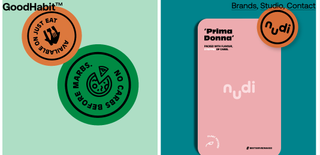
London branding and design studio, Good Habit , has a fun and fresh portfolio that beautifully displays its work. A plainer Studio section outlines what the studio does, while the brands section displays projects with large format photography intermixed with sections of texts. It really works.
04. Studio Feixen
This Switzerland based design studio is absolutely jam-packed full of fun and characterful work. Studio Feixen perfectly showcases its vibrant work with a mix-match style portfolio that abstains from a 'less-is-more' approach. Despite the examples being framed in a range of different sized shapes on the portfolio page, the site still looks cohesive.
05. RoAndCo

Founded by creative director Roanne Adams, NYC-based RoAndCo offers beautifully crafted design, branding and creative direction to clients in fashion, beauty, tech and lifestyle. Viewing RoAndCo’s portfolio is an experience in itself, in keeping with the studio's work ethos. Projects are presented in an editorial-like fashion, allowing the viewer to flick through split-screen images, animated web presentations and full-screen video. It's a carefully considered design portfolio and a pleasure to view, whether you're browsing on a computer or a mobile device.
Get the Creative Bloq Newsletter
Daily design news, reviews, how-tos and more, as picked by the editors.
06. Robin Mastromarino

Paris-based interface designer Robin Mastromarino employs some neat UI animation touches to keeps things fresh on his design portfolio site. His projects appear as though they're on a wheel, juddering into view, which is an engaging effect. The images in each case study respond to scrolling by warping slightly. It's an effect that we wouldn't recommend for every creative, but for a UI design specialist, this strikes the right note and gives a taster of what the designer can do.
07. Active Theory
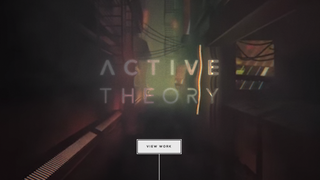
Entering Active Theory 's portfolio website is like visiting a whole other world. It employs a moody, almost cyberpunk aesthetic throughout, and to great effect. From the atmospheric homepage animation with mouse-activated glitch effects to the trippy About page, the setting all gels together to form a cohesive package. The studio keeps things cleaner for its project pages. Each example features a full-screen animation overlaid with a short blurb and relevant links to further information, including detailed case studies hosted on Medium.
08. Raw Materials
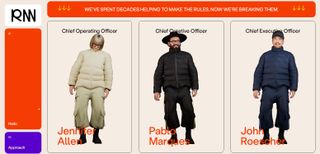
Raw Material' s site is a feast for the eyes. The Work section is particularly fun, with more detail on projects shown through diagrams and images. We also like the 3D models in the 'Hello' section, which also appear in 'Contact'. Overall it's a fun fresh site that makes the studio stand out from the crowd.
09. Velvet Spectrum

Velvet Spectrum is the online moniker of visual artist and designer Luke Choice. He shows that simplicity can also make an impact on his homepage, which shows a montage of uber-colourful thumbnails that lead through to visually arresting super-size examples of his work for maximum impact. The black background keeps things clean and helps the work stand out. It makes for a simple but highly effective design portfolio.
10. Locomotive

Locomotive , a studio based in Quebec, Canada, specialises in crafting digital experiences, so it's taken care to make its design portfolio site an all-round delightful and engaging experience. Playful, entertaining animations bring the site to life, and not just on the homepage. It seems like thought and effort has been put into every detail. Little surprises keep the viewer's interest while they browse through the site, making this a perfect example of how animated flourishes can be used effectively without them becoming gimmicky or distracting.
11. Studio Thomas
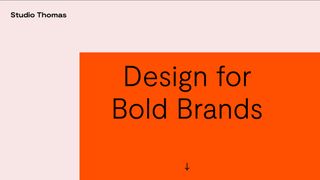
Named after its two creative directors, Thomas Austin and Thomas Coombes, Studio Thomas in East London creates visual communication for both physical and digital worlds. Its portfolio is a superb example of Brutalist web design with plenty of neat touches. Projects are presented in an orderly but eye-catching way with clear visuals and wireframe models. The site perfectly reflects the studio's explorative and experimental attitude, and it backs up the studio's claim to offer "design for bold brands."
12. Buzzworthy Studio
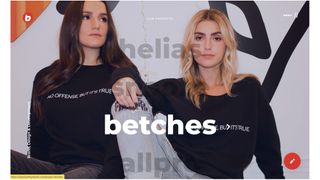
Describing itself as a "badass digital studio in Brooklyn", Buzzworthy Studio really needed to come up with the goods to back up that claim, and happily, its portfolio does the job. It features dazzling web techniques from the off. Bold typography and animation combine to grab your attention, and a strong eye for aesthetics ensures that viewers stick around to explore all of Buzzworthy's projects. It's one hell of a calling card.
13. Xavier Cussó

This stunning portfolio site for Barcelona-based designer Xavier Cussó was built by Burundanga Studio. It shows off Cussó's work with bold colours, in-your-face typography and practically every animation and parallax scrolling trick in the book. But that doesn't make it feel overloaded. The animation makes and impact and maintains the viewer's attention throughout.
14. Merijn Hoss
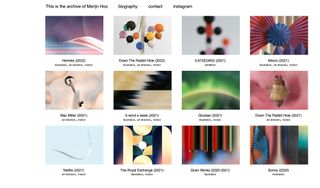
Illustrator and artist Merijn Hoss takes a more pared-back approach, but his design portfolio is still very effective. Hoss creates beautifully detailed psychedelic works of art, but his profile presents his work in quite a simple, clean format. It's one of the most traditional approaches we've included on this list of design portfolios and isn't nearly as flashy as some of the previous examples, but it works well because the colourful thumbnails really pop out of the gallery's white background, putting the focus on the artist's work. Click the thumbnails, and large project images and a short description are revealed. Hoss's design portfolio is proof that you don't need all the bells and whistles to make an impact.
15. Malika Favre
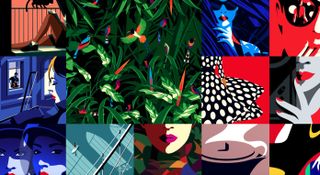
Illustrator Malika Favre uses a full-screen edge-to-edge tapestry of thumbnails to entice visitors into viewing her vibrant artwork in more detail. The colours and layout already draw attention, while the arrangement of animated pieces within still artworks serves even more to keep eyes on the screen. Once clicked, the thumbnails reveal a full-screen gallery presentation of the work featured. It's displayed on complementary coloured backgrounds that show off her work to great effect and makes for a bold, colourful presentation that grabs the viewer's attention.
Thank you for reading 5 articles this month* Join now for unlimited access
Enjoy your first month for just £1 / $1 / €1
*Read 5 free articles per month without a subscription
Join now for unlimited access
Try first month for just £1 / $1 / €1
Ruth spent a couple of years as Deputy Editor of Creative Bloq, and has also either worked on or written for almost all of the site's former and current print titles, from Computer Arts to ImagineFX. She now spends her days reviewing mattresses and hiking boots as the Outdoors and Wellness editor at T3.com, but continues to write about design on a freelance basis in her spare time.
- Rosie Hilder
Related articles

- 2 Noel Gallagher's football font makes a mockery of typography, claims design lecturer
- 3 A’ja Wilson’s Nike logo makes perfect sense
- 4 The new Verizon logo is a glowing success
- 5 'I can't tell you how scary it is designing for designers': Why Figma's new UI is a big deal
- 2 Apple finally addresses its most infamous design crime
- 3 Harness AI for design and art using your very own workstation
- 4 Acclaimed digital brush creator Kyle T. Webster joins Procreate
- 5 Using Unreal Engine: what skills do artists need to make it in real time filmmaking?

TechBullion
Best free design courses with high ratings.

Design is an ever-evolving field that demands ongoing learning. Many high-quality free online courses cover topics from graphic design basics to user experience principles. This article highlights top free courses and how they can help you master elements like holographic stickers.
Coursera offers top-rated free design courses, including the highly recommended “Graphic Design Specialization” from the California Institute of the Arts. This course covers essential design principles and techniques, including how to use trendy elements like holographic stickers . Its structured learning paths make it ideal for advanced design skills.
Udemy features a range of free design courses that are accessible and practical. The “Introduction to Graphic Design” course, for example, provides a solid foundation in design principles and practical skills. It also covers modern design trends. Udemy’s user-friendly format and practical approach make it ideal for both beginners and advanced learners.
edX provides top-rated free design courses, including MIT’s “Fundamentals of Graphic Design.” This course covers core design concepts and trends, such as using holographic stickers. edX’s collaboration with prestigious institutions ensures a high-quality education.
Canva Design School
Canva Design School provides free design courses that focus on practical skills and tools. Their “Design Basics” course is a great resource for learning essential design techniques. Canva’s courses also offer guidance on using innovative design to enhance visual appeal. Canva Design School’s hands-on approach makes it a valuable resource for practical design learning.
Alison offers top-rated free design courses like the “Diploma in Graphic Design,” which covers design principles, typography, and branding, including modern techniques like holographic stickers. Its comprehensive and flexible content is ideal for building design skills.
Skillshare offers free design courses that are highly rated for their engaging content. The “Graphic Design Basics” course provides a solid foundation in design theory and practical skills. Skillshare’s emphasis on creative projects often includes contemporary trends making it a valuable platform for exploring modern design techniques.
LinkedIn Learning
LinkedIn Learning offers high-quality free design courses, including “Graphic Design Foundations,” which covers key concepts and innovative elements like holographic stickers. Its professional, career-oriented approach makes it ideal for applying design skills in real-world scenarios.
Kadenze offers free design courses with a focus on art and technology integration. The “Creative Coding” course, for instance, combines design principles with coding, allowing learners to create interactive visual experiences. Kadenze’s approach to blending art and technology provides a unique perspective on modern design.
DesignCourse
DesignCourse provides free design courses with practical content and clear instruction. The “UX/UI Design” course covers user experience and interface design fundamentals, including the use of modern design elements like holographic stickers. DesignCourse’s focus on user-centric design makes it a valuable resource for aspiring UX/UI designers.
Pluralsight
Pluralsight offers free design courses with technical depth. The “Introduction to Graphic Design” course covers design tools and techniques extensively, including the use of custom pins in your projects. Pluralsight’s detailed approach is perfect for learners aiming to master design software.
FutureLearn
FutureLearn features several free design courses with excellent ratings. The “Digital Skills: Web Analytics” course helps learners understand how to use design data to enhance digital marketing strategies, including the use of eye-catching elements like holographic stickers. FutureLearn’s practical approach and collaborative environment enhance the learning experience.
OpenLearn offers accessible and well-regarded free design courses. The “Design Thinking” course explores innovative problem-solving techniques and creative thinking. OpenLearn’s user-friendly design makes it easy for learners to engage with the content.
Domestika provides free design courses that are highly rated for their creative approach. The “Introduction to Motion Graphics” course covers the basics of creating dynamic visual content, including the use of holographic stickers to add a modern touch. Domestika’s emphasis on creative projects and industry insights offers valuable learning experiences.

CreativeLive
CreativeLive features free design courses popular among creative professionals. The “Fundamentals of Design” course covers core design principles and practices, including how to use elements like holographic stickers effectively. CreativeLive’s high-quality video content and practical applications make it a valuable resource for enhancing design skills.
HubSpot Academy
HubSpot Academy’s free “Graphic Design for Beginners” course focuses on integrating design with digital marketing. Its practical approach is ideal for enhancing marketing materials.
Google Garage
Google Garage features free design courses with positive feedback. The “Design Thinking for Beginners” course provides insights into innovative design approaches, including how to use design elements like holographic stickers to enhance visual appeal. Google Garage’s accessible and engaging courses make it an excellent choice for practical learning.
Adobe Spark
Adobe Spark provides free design courses that focus on creative projects using Adobe tools. The “Creating Graphics with Adobe Spark” course helps learners develop graphic design skills. Adobe Spark’s courses are praised for their hands-on approach and ease of use.
Exploring top-rated free design courses can boost your skills and knowledge. Platforms like Coursera, Udemy, and edX offer structured content, while Alison, Skillshare, and LinkedIn Learning provide practical courses. Kadenze and DesignCourse focus on design and technology, while OpenLearn and Domestika offer innovative content. Utilize these resources to enhance your design skills and stay updated with trends like holographic stickers, all at no cost .

Trending Stories

Leading Nations with Restrictive Cryptocurrency Policies
Cryptocurrency has become a widely used payment method worldwide. Well-known tokens such as Bitcoin,...

Design is an ever-evolving field that demands ongoing learning. Many high-quality free online courses...

Coaches, Trainers, Digital Marketers: WebinarIgnition – The Ultimate WordPress Plugin for Your Webinar Woes
Webinars have become the go-to tool for coaches, trainers, and digital marketers. They offer...

BlockDAG’s $65M Presale, Why It’s the Crypto To Watch Over Litecoin and Near Protocol
Near Protocol price decline reflects its current market struggles, while Litecoin (LTC) holders are...

Quantum AI Sally Nugent Reviews
“Quantum AI Sally Nugent” – What does Sally Nugent have to do with Quantum...

Hedera (HBAR) & Avalanche Plummet; Are BlockDAG’s 100k Community & Automatic Bonuses a Game-Changer for Investors?
Why has Hedera’s value declined despite strong corporate backing? What caused the Avalanche price...

Prevent Social Media Hacks with Proactive IT Measures
Social media is a powerful tool for small businesses, helping them connect with customers,...

10 Digital Marketing Technology Tools for Email Marketing
In today’s digital age, email marketing remains one of the most effective ways to...

Trucking TMS Software: The Backbone of Modern Logistics
In the rapidly evolving world of logistics, Trucking Transportation Management Software (TMS) has emerged...

Quantum AI Boris Johnson Review 2024
Quantum AI Boris Johnson – Are Quantum AI Boris Johnson reviews legit? Or just...

BlockDAG Rises Among Top Crypto Coins With 1600% Growth; Ethereum Classic Trust Index and BNB Price Updates
The Ethereum Classic’s trust index is undergoing strategic revisions by Grayscale Investments. This move...

Intersection of Artificial Intelligence and Physics
Renowned Physicist and AI Pioneer Dr. Achint Kumar Releases Best-Selling Book In the ever-evolving...

Empowering Secure Crypto Mining: Explore ZhenChainMicro’s Trusted Solutions
Introduction: In an industry that is filled with innovation on one hand but overshadowed...

Amazon’s $4 Billion Buy In AI Firm Anthropic Faces UK Merger Probe
An official inquiry has been launched by a U.K. competition regulator into the multibillion-dollar...

10 Ways to Enhance ROI Using Automation in U.S. Digital Marketing Campaigns
Digital marketing is a game changer for marketing, offering numerous ways to enhance ROI...

How to Maximize ROI from Digital Marketing Campaigns in the U.S. with Data-Driven Techniques
Using ROI from digital marketing campaigns in the U.S. requires a data-driven approach that...

Maximizing ROI in the U.S.: 10 Digital Marketing Campaign Tactics that Work
Using the ROI in digital marketing campaigns requires a tactical approach that leverages data-driven...

BlackRock’s Ethereum ETF Sees $900 Million Inflows as Whales Rush to Buy MoonTaurus (MNTR) Ahead of Phase 2
The cryptocurrency market is experiencing a wave of institutional interest, exemplified by BlackRock’s recent...

MoonTaurus (MNTR) Raises $290,000 in Record Time, Phase 1 Nears Completion with 100% Price Increase Ahead
MoonTaurus (MNTR) has achieved a significant milestone by raising $250,000 (now over $280,000) in...

From Vision to Execution: Gurmat Bhatia’s Strategy for Tech-Business Alignment
In the fast-paced arena of contemporary business, the synchronization of technology with overarching business...
Like Us On Facebook
Latest interview.

Q&A with the CEO of MBO Partners, Miles Everson on: How Generative AI is A Game-Changer for Freelancers & Independent Workers
In this TechBullion Q&A session, Miles Everson, CEO of MBO Partners, delves into the transformative impact of generative AI on freelancers and...
Latest Press Release

Ultima Business Solutions Welcomes Jamie Beaumont as New CFO
Ultima Business Solutions, a leading provider of innovative technology solutions, is proud to announce a significant enhancement to its leadership team. Effective...
Pin It on Pinterest
Popular Searches
Graphic design major, related programs:, what you'll learn.
Take a look at this webpage. Or find a t-shirt, book jacket, poster, or logo. Are your eyes drawn to it? Do the images, colors, and typography work together effectively? How can a simple font choice reinforce—or undermine—a message?
At Calvin, you’ll ask these kinds of questions in a small classroom setting, where your professors know you personally and give you individualized attention. You’ll work alongside classmates where you'll collaborate and learn from each other. You’ll learn why centuries-old typefaces are still relevant. You’ll draw connections between traditional letterpress materials and pixels on a screen.
You’ll do more than just make something look good. You’ll learn to solve design problems in the world, and that will open up a wide range of possibilities.
What Makes This Program Great
- Faculty mentorship: Our faculty are invested in you. They’ll push you to learn more about yourself and to find your own voice. They’ll open up your future to a variety of career options, possibilities you didn’t even know existed.
- A business bend: Our program offers a mixture of graphic design, art studio, and business classes. Not only will you gain the technical skills of Adobe Suite, you’ll also learn the marketing and entrepreneurial side of graphic design.
- Amazing opportunities: Want to double major or study abroad and still graduate in four years? We make it possible. We know that the classes or experiences you have outside your major will help to inform and inspire your art.
- An art city: Whether it’s the GRAM art museum, Art Prize, Project 1, the Civic Theater, or other venues, Grand Rapids offers a wide range of opportunities for engaging excursions.

Craig Hanson
Housing Programs
Why we care.
- Housing Needs By State
- Become a Member

Projects & Campaigns
- Take Action
NLIHC Seeks Graphic Communications Coordinator
NLIHC seeks a graphic communications coordinator to work closely with the NLIHC director of communications to support NLIHC’s externally facing efforts and products. The graphic communications coordinator will support the communications team with visual storytelling, graphic design, content creation, web management, social media, marketing, and overall delivery of NLIHC communications assets.
Responsibilities/Duties:
- Provide support for the external affairs team’s overall workflow pacing, production, project management, and delivering on deadline in a responsive, fast paced environment – to include graphic design, web management, publications, cross-team communications requests, advocacy resources, social media, digital, e-communication, and multimedia.
- Track metrics to measure effectiveness of graphic communications services and marketing strategies.
- Support the daily management and maintenance of each NLIHC digital platform and its content.
- Build and/or manage new CMS platforms, as needed.
- Prepares layouts, designs, and formats for use in publication and overall, externally facing materials – to include graphs, maps, charts, brochures, signage, reports, logos, social media images, digital assets, and marketing collateral.
- Coordinates all administrative aspects of production, including checking and approving color, copy, text format separations, and scaling images for final production.
- Support NLIHC’s existing social media, digital, and publication strategies with innovative multimedia content creation and visual storytelling.
- Support on-site graphic communications services requests before and during each NLIHC event, as needed, to support brand representation and overall experience.
- Lead and/or provide support for design/web/production processes to ensure consistency and efficiency.
- Lead and/or provide support for the organization of NLIHC design assets and published materials.
- Support NLIHC publication process of design, production, translation/accessibility services, and order fulfillment.
- Other duties as assigned.
Qualifications
This is a full-time position, and candidates must be physically located in the metropolitan Washington, DC area. Applicants must have a bachelor’s degree. Applicants must have a strong commitment to social justice and NLIHC’s mission. This position would be ideal for someone with a minimum of five or more years of directly relevant graphic communications experience. Proficiency in graphic design software/applications and content management systems is required. Experience with Salesforce is preferred.
The salary range for this position is contingent upon experience and is from $67,000 - $78,000. This position requires physical time in the office and the candidate must be located in the metropolitan Washington, DC area or be able to commute to our office located in DC for a hybrid work schedule.
A person will be most successful in this role if you have strong graphic design abilities, interpersonal skills, writing, and organizational skills, as well as a keen attention to detail.
An equal opportunity, affirmative action employer, NLIHC offers a competitive salary and a generous benefits package.
Interested candidates should submit a resume, cover letter with salary requirement, and one writing sample to Jen Butler, NLIHC VP of External Affairs, via email at [email protected] .
Related Content
Join today’s (8/12) national housed campaign call to learn about the disaster housing recovery needs of the lowest-income renters.
Join today’s (8/12) national HoUSed campaign call from 2:30 to 3:30 pm ET to learn about the disaster housing recovery needs of the lowest-income renters! Noah Patton and Meghan Mertyris of NLIHC’s…
Take Action in Your District during August Recess!
Members of Congress are back in their home states and districts until September 9 for a month-long work period known as “August recess.” During this time, advocates will have valuable opportunities…
HUD Announces Policy Changes to Expand Veterans’ Access to Housing Assistance
HUD announced changes to the HUD-U.S. Department of Veterans Affairs (VA) Supportive Housing (HUD-VASH) program in a press release on August 8. The changes aim to help more veterans with service-…
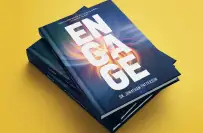
Minimalist Interior Design for Duplex
₹1500-12500 inr, about the project, place your bid, benefits of bidding on freelancer.

About the client
Client verification, similar jobs.

IMAGES
COMMENTS
51+ Graphic Design Project Ideas. Logo design for a new startup. Poster design for an upcoming event or concert. Business card design for a freelancer or small business owner. Flyer design for a local business promotion. Brochure design for a tourism company or travel destination.
Using printable tattoo paper, create digital designs using an inkjet printer. This is a fun way to explore technology, and your students will get to wear their designs! 4. Mosaic Portraits. If you use Photoshop, you know there are countless features to the program.
Enhance your design skills and unleash creativity with these exciting graphic design projects perfect for college students. Logos and branding. Creating a logo or branding package is one of the most classic and popular graphic design projects. It can include making logos, business cards, letterheads, and product packaging.
Setting a short time limit like 10 minutes leaves no room for creative indecisiveness and instead brings in the kind of spontaneity that helps creativity grow. 2. Gamify your learning. Getting unstuck from a creative block doesn't always have to be a serious endeavor. Designercize takes traditional whiteboard exercises to the digital realm ...
Graphic design is a powerful tool for creating effective learning materials that engage and educate students. From infographics to interactive presentations, there are a multitude of ways that ...
Graphic Design 1 Curriculum. A comprehensive Graphic Design semester-long course in digital media that uses Adobe Photoshop and Illustrator. Teaching materials include presentations, lesson plans, video tutorials, student examples, self evaluations and rubrics. Adrianne Nix.
Teaching graphic design helps students become discerning consumers of visual content. They learn to analyze and interpret images, understanding the messages and emotions they convey. This skill is not only valuable in design but also in fields like media studies, advertising, and communication. 2.
August 4, 2022. The graphic design industry continues to harness the creativity and innovative ideas of graphic designers. As a result, it is crucial to be equipped with the right skills to place you in high demand. Embarking on graphic design projects is an excellent way to develop top-tier skills and build a robust graphic design portfolio.
Great for branding, marketing, and Product/UX designers. 2. Briefz. You can thank Austin Baird for creating a simple and fun brief generator for every kind of designer. Briefz lets you sift through all kinds of design prompts with the click of a spacebar.
Exploring Visual Communication Through Graphic Design PRO Learning Pack. While designing labels for the school computer lab may not sound that exciting, the fact that students will see the winning design every time they log on is a cool opportunity. Encourage your students to think creatively and propose their own design projects as well.
Step 2: Invest in the right tools. If you want to become a graphic designer, you'll also need to become proficient in the graphic design software you'll use to create your work. If you're just starting out, consider downloading a few free graphic design softwares before investing in more robust tools. Free graphic design tools like ...
3. Refine your projects, create extensive rollouts, develop an interview portfolio, build a website, and start showcasing your work to the industry. Shillington's innovative approach to graphic design education means students achieve amazing results in a seriously short amount of time, and all taught online.
Well, follow these expert graphic design portfolio tips, and you shouldn't go far wrong…. 1. Let go of lesser work. When you've put a lot of time, effort and emotional energy into a particular project, you naturally want to show it off to people and include it in your graphic design portfolio. But if you want your portfolio to be the best ...
Here are some tips. 1) Show your best work. 2) Express your personality through your designs. 3) Document the impact of your designs, such as increased brand awareness (with real percentages and analytics!). Read more: Tips for Creating an Impressive Graphic Design Portfolio. 5. Grow your network.
Sharpen is trusted by teams and designers worldwide: Design challenge exercises are among the most informative data points when assessing someone's individual design capabilities as part of the hiring evaluation process. Sharpen is a simple, elegant way to create these types of design challenges that are fairly considered for the candidate.
Here's a quick rundown of each course: Course 1: Fundamentals of Graphic Design. Course 2: Introduction to Typography. Course 3: Introduction to Imagemaking. Course 4: Ideas from the history of Graphic Design. Course 5: Brand New Brand. To get free access to the course material, simply choose to audit the class via Coursera.com. 2.
Graphic Designer Portfolio. Gagan Negi. 67.5k. Upgrade to Behance Pro today: Get advanced analytics, a custom portfolio website, and more features to grow your creative career. Start your 7 day free trial. Jump to Main Content. Behance is the world's largest creative network for showcasing and discovering creative graphic design portfolio work.
Formal education in graphic design consists of a degree program at a college, university, or specialised school. Here is more about this path: Pros: Structured curriculum with hands-on training. Access to industry-standard tools and software. Learning from experienced professionals.
Diversity: The segment helps represent all segments of a target audience or geographic location in a design, not just one group or subsection. Sustainability: This segment focuses on how graphic design ideas reflect a company's or client's views on environmental issues and helping the planet. 21. Steampunk.
Feb 13, 2022 - Explore Debra Bretton Robinson's board "graphic design projects", followed by 207 people on Pinterest. See more ideas about art lessons, teaching art, elementary art.
Learn how graphic design contributes to the formation and expression of complex societal ideas and values. Join the staff of Arete or the Sorin Oak Review, campus publications for academic and creative works, or lend your talents to Hilltop Views, the campus newspaper. ... General Education Requirements: The Graphic Design degree requires 57 ...
The platform, which she created along with fellow GSE student Mary Steel from the International Education Policy Analysis program, was Irish's master's project for the LDT program. ... An emphasis on human-centered design. An integral part of the project for LDT students is ensuring that the solution they're creating is human-centered and ...
Its portfolio is a superb example of Brutalist web design with plenty of neat touches. Projects are presented in an orderly but eye-catching way with clear visuals and wireframe models. The site perfectly reflects the studio's explorative and experimental attitude, and it backs up the studio's claim to offer "design for bold brands." 12.
Design is an ever-evolving field that demands ongoing learning. Many high-quality free online courses cover topics from graphic design basics to user experience principles. This article highlights top free courses and how they can help you master elements like holographic stickers. Coursera Coursera offers top-rated free design courses, including the highly recommended "Graphic Design ...
A business bend: Our program offers a mixture of graphic design, art studio, and business classes. Not only will you gain the technical skills of Adobe Suite, you'll also learn the marketing and entrepreneurial side of graphic design. Amazing opportunities: Want to double major or study abroad and still graduate in four years? We make it ...
A graphic design graduate will develop a good mix of subject-specific and technical skills that include communication, creativity, project management, the ability to manage time and meet deadlines, concept development, presenting ideas, networking and liaising with clients and the ability to work independently.
NLIHC seeks a graphic communications coordinator to work closely with the NLIHC director of communications to support NLIHC's externally facing efforts and products. The graphic communications coordinator will support the communications team with visual storytelling, graphic design, content creation, web management, social media, marketing, and overall delivery of NLIHC communications assets.
Bachelor's or graduate degree in Graphic Design, Marketing, Journalism, Communications, or other relevant field; Attendance at weekly online meetings each Tuesday from 6:30 p.m. to 8 p.m. Eastern Time; and an additional 3 to 5 hours of remote work per week; Prior experience in social media management
Prioritizing design principles in visual identity creation helps evaluate the candidate's understanding of brand consistency, aesthetics, and their ability to convey brand messaging through design elements. Answer: 3. Design principles such as simplicity, consistency, and usability are crucial in creating a strong visual identity.
Key Project Requirements: - Design Scheme: The design must follow minimalist principles, presenting a clean, simple, and coordinated sense of style. - Functionality: The space will consist of both bedrooms and a home office. The design should incorporate a seamless blend of the two, focusing on comfort, privacy, and functionality.